
120+ Exciting 5th Grade Science Project Ideas With Hypothesis In 2023
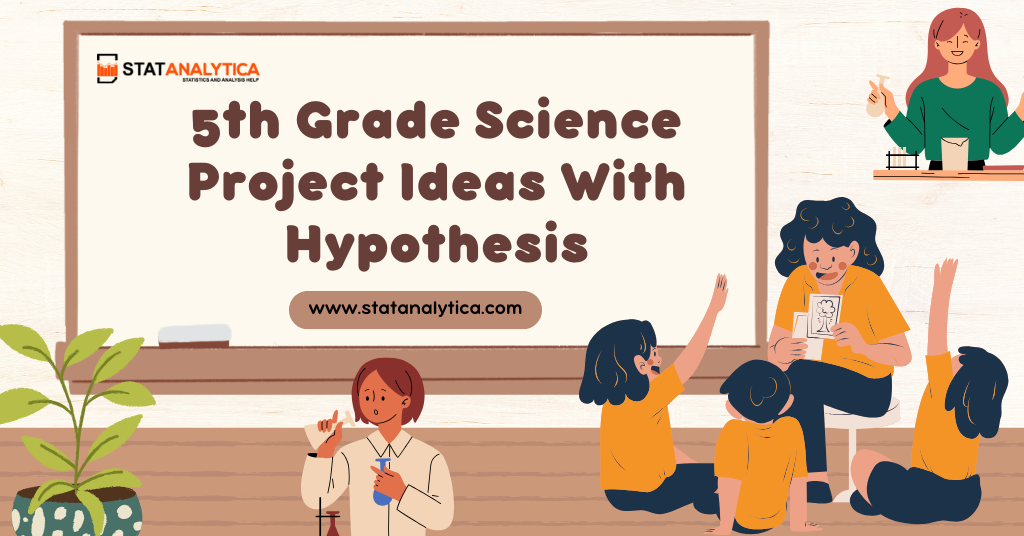
Are you ready to embark on an exciting journey into the world of 5th-grade science projects with hypotheses? Science projects are not just about fun experiments; they also involve forming hypotheses to make educated guesses about outcomes. But what makes a good hypothesis for a science project? In this blog, we’ll explore the key components of a successful hypothesis.
Selecting the right 5th-grade science project can be a challenge, and we’ll share some valuable tips to help you choose the perfect one. We’ll dive into the importance of combining hypothesis with your science project and why it’s a vital aspect of learning and discovery.
But that’s not all! We’ve also compiled an extensive list of 120+ exciting 5th-grade science project ideas with hypothesis, providing you with a wealth of inspiration for your next scientific adventure. Stay tuned with us to unleash the world of 5th-grade science project ideas with hypothesis and nurture your curiosity in the process.
What Is A Good Hypothesis For A Science Project?
Table of Contents
A good hypothesis for a science project is like a smart guess. It helps scientists figure out what they think will happen in their experiment. To make a good hypothesis, you need to use words like if and then. For example, If I water the plant every day, then it will grow taller. This shows what you’re going to do and what you expect to see.
In addition, a strong hypothesis also needs to be testable. That means you can experiment to see if it’s true or not. It’s like a detective’s clue that leads you to find the answer. Scientists use good hypotheses to guide their experiments and learn new things about the world. So, making a good hypothesis is an important part of any science project.
Things To Remember While Selecting A 5th Grade Science Project Ideas With Hypothesis
Here are some things to remember while selecting a 5th grade science project ideas with hypothesis:
1. Personal Interest
Choose a 5th-grade science project that interests you. Picking a topic you’re curious about makes the project more enjoyable. Whether it’s plants, animals, or space, your passion can make learning fun.
2. Age-Appropriate
Make sure the project is right for your grade level. A 5th-grade project shouldn’t be too simple or too complex. It should match your skills and what you’ve learned in school.
3. Available Resources
Check if you have access to the materials you need. Some projects might need special tools or expensive stuff. It’s essential to choose something you can do with the materials you have.
4. Safety First
Keep safety in mind. Select a project that’s safe to do at home or in school. Make sure you won’t be using anything harmful or dangerous.
5. Clear Instructions
Look for a project with clear instructions. It’s easier when you know what to do step by step. Projects with easy-to-follow directions help you succeed and learn better.
Developing A Hypothesis For Your Science Project
Developing a hypothesis for your science project is a crucial step. It’s like making an educated guess about what you think will happen during your experiment. Here are seven key points to consider while creating a hypothesis:
- Identify the Variables: Determine the two things you’re testing in your experiment, the if and then parts. For example, if you’re testing plant growth, the variables could be amount of sunlight and plant height.
- Be Specific: Make sure your hypothesis is clear and precise. Avoid vague or broad statements. The more specific, the better.
- Predict the Outcome: Your hypothesis should state what you expect to happen. Will one variable cause a change in the other? State your prediction clearly.
- Use If-Then Statements : Craft your hypothesis using if-then statements to show the relationship between the variables. For instance, If the amount of sunlight increases, then the plant height will also increase.
- Keep It Testable: Ensure that your hypothesis is something you can test through an experiment. It should lead to concrete results that you can measure.
- Avoid Bias: Make sure your hypothesis doesn’t show your personal beliefs. It should be based on research and evidence, not what you want to happen.
- Revisit and Revise : As you conduct your experiment, be ready to adjust your hypothesis if the results don’t match your initial prediction. Science is all about learning and adapting.
Here we have a list of 120+ exciting 5th grade science project ideas with hypothesis in 2023:
- Balloon Rocket
Hypothesis – If I inflate a balloon and release it, then it will move forward because of the escaping air.
- Moldy Bread
Hypothesis – I think bread left in different conditions will develop mold at varying rates.
- Growing Plants
Hypothesis – If I give plants different amounts of water, then they will grow differently.
- Magnet Magic
Hypothesis – I predict that magnets will attract some objects but not others.
- Lemon Battery
Hypothesis – I believe I can create a battery using a lemon because it is acidic.
- Volcano Eruption
Hypothesis – I expect that a mixture of vinegar and baking soda will create a volcanic eruption.
- Density of Liquids
Hypothesis – I think different liquids have different densities, and some will float on top of others.
- Solar Still
Hypothesis – I predict that a solar still can collect clean water from dirty water through evaporation.
- Bouncing Balls
Hypothesis – I believe that balls made from different materials will bounce to different heights.
- Static Electricity
Hypothesis – I think rubbing a balloon on my hair will create static electricity that attracts objects.
- Fruit Battery
Hypothesis – I expect that fruits like oranges and lemons can power a small light bulb.
- Color-Changing Milk
Hypothesis – I predict that adding soap to milk with food coloring will make colorful patterns.
- Tornado in a Bottle
Hypothesis – I think that by swirling water and dish soap in a bottle, I can create a tornado-like vortex.
- Water Filtration
Hypothesis – I believe that by using sand and gravel, I can filter impurities from water.
- Rust Formation
Hypothesis – I predict that metal objects left in water will rust over time.
- Candy Dissolving
Hypothesis – I think that different candies will dissolve at different rates in water.
- Seed Germination
Hypothesis – If I plant seeds in various conditions, then they will sprout at different rates.
Hypothesis – I expect that by using a simple rain gauge, I can measure rainfall accurately.
- Sound Vibrations
Hypothesis – I believe that different objects will produce different sounds when struck.
- Egg Drop Challenge
Hypothesis – I predict that if I design a protective container, the egg will survive a fall.
- Paper Airplanes
Hypothesis – I think that altering the shape of paper airplanes will affect their flight distance.
- Food Preservation
Hypothesis – I expect that different methods of food preservation will keep food fresh longer.
- Homemade Slime
Hypothesis – I believe that mixing glue and borax will create a slimy substance.
Hypothesis – I predict that combining oil and water with Alka-Seltzer will create a mesmerizing lava lamp effect.
- Air Pressure
Hypothesis – I think air pressure can be measured with a simple barometer.
- Crystal Growth
Hypothesis – I expect that I can grow crystals by dissolving substances in water.
- Ocean Currents
Hypothesis – I predict that hot water and cold water will create ocean currents in a container.
- Rainbow in a Jar
Hypothesis – I believe I can create a rainbow by layering different liquids with different densities.
- Static Electricity Levitation
Hypothesis – I think that static electricity can make a small object levitate.
- Melting Ice
Hypothesis – I predict that adding salt to ice will cause it to melt faster.
- Potato Battery
Hypothesis – I expect that a potato can conduct electricity and power a small device.
- Pendulum Swing
Hypothesis – I believe that the length of a pendulum will affect its swing time.
- Soda Geyser
Hypothesis – I predict that dropping Mentos candies into soda will create a geyser.
- Chromatography
Hypothesis – I think I can separate the colors in markers using chromatography.
- Heat Transfer
Hypothesis – I expect that different materials will transfer heat at varying rates.
- Rainfall and Runoff
Hypothesis – I predict that if I simulate rainfall on different surfaces, some will produce more runoff.
- Fizzy Lemonade
Hypothesis – I believe that combining lemon juice and baking soda will make lemonade fizzier.
- Rock Identification
Hypothesis – I think I can identify different rocks by their characteristics.
Hypothesis – I predict that by cutting a straw, I can make it produce musical sounds like an oboe.
- Taste Perception
Hypothesis – I expect that people’s taste perception may change when their sense of smell is altered.
- Color-Changing Flowers
Hypothesis – I believe that adding food coloring to water will change the color of white flowers.
- Solar Cooker
Hypothesis – I predict that a solar cooker can cook food using only the sun’s energy.
- Tornado Formation
Hypothesis – I think that rotating two bottles will create a tornado effect.
- Vinegar and Baking Soda Rocket
Hypothesis – I expect that mixing vinegar and baking soda in a bottle will launch it into the air.
- Popsicle Stick Bridge
Hypothesis – I predict that I can build a strong bridge using only popsicle sticks and glue.
- Rainfall Patterns
Hypothesis – I believe that rainfall patterns can be different in various parts of the world.
- Chemical Reactions
Hypothesis – I think mixing certain chemicals will result in a visible reaction.
- Fruit Decomposition
Hypothesis – I predict that different fruits will decompose at different rates.
- Balancing Act
Hypothesis – I expect that I can balance various objects on a pivot point.
- Photosynthesis Simulation
Hypothesis – I believe that using a simple setup, I can show how plants perform photosynthesis.
- Sinking and Floating
Hypothesis – I think that objects with different densities will either sink or float in water.
- Tooth Decay
Hypothesis – I predict that different liquids will affect teeth differently, simulating tooth decay.
- Rainwater Collection
Hypothesis – I expect that by using a funnel, I can collect rainwater efficiently.
- Soundproofing
Hypothesis – I think that different materials will block sound to varying degrees.
- Egg in a Bottle
Hypothesis – I predict that I can place a peeled hard-boiled egg into a bottle without breaking it.
- Water Wheel
Hypothesis – I believe that the flow of water can make a small wheel turn.
- Invisible Ink
Hypothesis – I expect that I can create invisible ink that reveals messages under certain conditions.
- Heat from the Sun
Hypothesis – I predict that a dark-colored object will get hotter in the sun than a light-colored one.
- Layered Liquids
Hypothesis – I think that liquids of different densities will form layers when mixed.
- Candle Burning
Hypothesis – I predict that different types of candles will burn at different rates.
- Buoyancy with Clay Boats
Hypothesis – I believe I can make clay boats that float and carry small loads.
Hypothesis – I expect that a mixture of cornstarch and water will behave strangely, like a liquid and a solid.
- Magnetic Slime
Hypothesis – I predict that adding iron filings to slime will make it magnetic.
- Stalactites and Stalagmites
Hypothesis – I think I can grow stalactites and stalagmites using a simple solution.
Hypothesis – I expect that different substances will have varying pH levels, which can be tested with indicator paper.
- Solar Still for Drinking Water
Hypothesis – I believe that a solar still can produce clean drinking water from saltwater.
Hypothesis – I predict that I can create a sundial that tells time using the sun’s shadow.
- Dissolving Sugar
Hypothesis – I expect that sugar will dissolve faster in hot water than in cold water.
- Balloon Inflator
Hypothesis – I think that a chemical reaction in a bottle can inflate a balloon.
- Baking Soda and Vinegar Boat
Hypothesis – I predict that a boat made from materials like baking soda and vinegar will move.
- Oil Spill Cleanup
Hypothesis – I believe that using different materials can help clean up an oil spill in water.
- Seed Dispersal
Hypothesis – I predict that seeds can be dispersed in various ways, such as by wind or animals.
- Lemonade Sweetness
Hypothesis – I expect that lemonade sweetness can be adjusted by adding sugar in different amounts.
- Density of Solids
Hypothesis – I think different solid objects will have different densities, which can be measured.
- Making Ice Cream
Hypothesis – I predict that I can make ice cream by mxing ingredients and using ice and salt.
- Conduction and Insulation
Hypothesis – I believe that different materials will either conduct or insulate heat.
- Centrifugal Force
Hypothesis – I predict that spinning an object will create a centrifugal force that affects its path.
- Balloon-Powered Car
Hypothesis – I expect that a car powered by a balloon will move because of the escaping air.
- Candle Extinguisher
Hypothesis – I think that covering a candle with a glass will extinguish it by using up the oxygen inside.
- Water Filter Comparison
Hypothesis – I predict that different water filters will remove impurities to varying degrees.
- Capillary Action
Hypothesis – I expect that water will rise differently in materials with varying capillary action.
- Static Electricity and Salt
Hypothesis – I believe that salt can be moved with static electricity.
- Food Coloring in Flowers
Hypothesis – I predict that adding food coloring to water will change the color of flowers.
- Bottle Trombone
Hypothesis – I think I can make a simple trombone-like instrument using a plastic bottle.
- Windmill Power
Hypothesis – I expect that a windmill can generate power when exposed to wind.
- Chewing Gum Flavor
Hypothesis – I predict that the flavor of chewing gum changes over time as it’s chewed.
- Yeast Balloons
Hypothesis – I believe that yeast will produce gas that can inflate a balloon.
- Water Wheel Efficiency
Hypothesis – I think that the design of a water wheel affects its efficiency in generating power.
- Simple Electric Circuit
Hypothesis – I expect that I can make a light bulb glow by completing an electric circuit.
- Sugar Crystal Lollipop
Hypothesis – I predict that sugar crystals will grow on a string dipped in a sugary solution.
- Temperature and Magnetism
Hypothesis – I believe that magnets will behave differently at various temperatures.
- Styrofoam and Acetone
Hypothesis – I expect that acetone will dissolve styrofoam.
- Starch in Foods
Hypothesis – I think I can test for the presence of starch in different foods using iodine.
- Balloon-Powered Boat
Hypothesis – I predict that a boat powered by a balloon will move on water.
- Melting Chocolate
Hypothesis – I expect that chocolate will melt at different rates when heated.
- Air Pollution and Plant Growth
Hypothesis – I believe that exposing plants to air pollution will affect their growth.
- Simple Motor
Hypothesis – I predict that I can build a simple motor that turns when an electric current flows through it.
- Lemon Battery Voltage
Hypothesis – I expect that different fruits will produce varying amounts of electricity when used as batteries.
- Fireworks in a Jar
Hypothesis – I think that mixing oil and colored water will create a fireworks-like display in a jar.
- Bending Water with Static Electricity
Hypothesis – I predict that static electricity can bend a stream of water from a faucet.
- Soda Can Fizz
Hypothesis – I expect that dropping a mentos candy into a soda can will cause fizzing.
- Tornado Tube
Hypothesis – I believe that connecting two plastic bottles with a tornado tube will create a vortex.
- Magnetic Attraction and Distance
Hypothesis – I predict that magnets will attract objects from varying distances.
- Heat Absorption by Colors
Hypothesis – I think that objects of different colors will absorb heat differently under sunlight.
- Lemon Battery Power
Hypothesis – I expect that a lemon battery can power a small LED light.
- Strawberry DNA Extraction
Hypothesis – I believe I can extract DNA from strawberries using common household items.
- Marshmallow Density
Hypothesis – I predict that marshmallows of different shapes and sizes have different densities.
- Balloon-Powered Windmill
Hypothesis – I think a windmill with balloons will turn when exposed to air.
- Spinning Colors
Hypothesis – I expect that spinning a color wheel will create the illusion of blending colors.
- Sound and Vibration
Hypothesis – I predict that different objects will create different sounds when struck and vibrate differently.
- Rock Erosion
Hypothesis – I believe that different rocks will erode at varying rates when exposed to water.
- Air Pressure and Crushed Can
Hypothesis – I expect that changing air pressure will crush an empty can.
- Straw Flute
Hypothesis – I think that cutting and blowing through a straw can produce musical notes.
- Bottle Rocket
Hypothesis – I predict that a bottle rocket filled with water and pressurized air will launch into the air.
- Fruit Electricity
Hypothesis – I believe that different fruits can produce electricity using simple circuits.
- Melting Snow and Ice
Hypothesis – I expect that different substances can help melt snow and ice at varying rates.
- Plant Growth in Different Soils
Hypothesis – I think that different soils will affect the growth of plants differently.
- Static Electricity and Salt and Pepper
Hypothesis – I predict that salt and pepper can be moved with static electricity.
- Floating Paperclip
Hypothesis – I expect that surface tension can make a paperclip float on water.
- Crayon Melt Art
Hypothesis – I believe that crayons will melt and create art when heated.
- Balloon-Powered Hovercraft
Hypothesis – I predict that a hovercraft powered by balloons will glide over a smooth surface.
- Research Topics For Commerce Students
- Maths Project Ideas For College Students
Importance Of 5th Grade Science Project Ideas With Hypothesis For Students
In this section, we will discuss the importance of 5th grade science project ideas with hypothesis for students:
1. Hands-On Learning
5th-grade science projects with hypotheses offer students a chance to learn through doing. They get to experiment, make predictions, and see the real-world results. This hands-on approach helps students grasp scientific concepts better.
2. Critical Thinking
These projects encourage critical thinking. Students have to come up with educated guesses (hypotheses) and then analyze their experiments’ outcomes. It teaches them to think logically and solve problems.
3. Curiosity and Exploration
Science projects fuel curiosity. They allow students to explore topics they find interesting, making learning more engaging. This curiosity can spark a lifelong interest in science.
4. Application of Knowledge
The things that students have learned in school can be used in real life. It helps them understand that science is not just in books, but all around them. This makes their education more useful.
5. Confidence Building
Successfully completing a science project with a hypothesis can boost a student’s confidence. They see that they can tackle challenging tasks and find solutions. This confidence can extend to other areas of their education and life.
Understanding what makes a good hypothesis is the first step in any 5th-grade science project with a hypothesis. It’s all about making educated guesses and having clear if-then statements. Remember to choose a project that matches your interest, is safe, and fits your grade level. With over 120 exciting 5th-grade science project ideas with hypothesis, you have a world of possibilities to explore.
Moreover, these projects offer hands-on learning, boost critical thinking, and ignite curiosity. They let you apply what you’ve learned in school to real life. Completing these projects can build your confidence, showing that you can tackle challenges and make discoveries. So, dive into the world of 5th-grade science project ideas with hypothesis and start your exciting scientific journey!
Related Posts

Step by Step Guide on The Best Way to Finance Car

The Best Way on How to Get Fund For Business to Grow it Efficiently
5th Grade Science Project Ideas with Hypothesis

Are you a 5th grader on a quest to discover the wonders of science? Well, you’re in luck! We’ve compiled a list of the top 100 5th grade science project ideas with hypothesis to help you embark on your scientific journey. These projects are not only fun but also educational, giving you the opportunity to learn while having a blast.
Science projects are a great way to explore your curiosity, test hypotheses, and better understand the world around you. So, let’s dive right into our list of exciting science project ideas and start making hypotheses!
Top 100 5th Grade Science Project Ideas with Hypothesis
1. The Color-Changing Milk Hypothesis:
Hypothesis: Mixing milk, dish soap, and food coloring will create a mesmerizing display of color.
2. The Vinegar and Baking Soda Volcano Hypothesis:
Hypothesis: When vinegar reacts with baking soda, it will create a volcanic eruption.
3. The Seed Germination Hypothesis:
Hypothesis: Different types of seeds will germinate at different rates.
4. The Balloon Rocket Hypothesis:
Hypothesis: Launching a balloon rocket will demonstrate Newton’s third law of motion.
5. The Lemon Battery Hypothesis:
Hypothesis: A lemon can be used to generate electricity and power a small LED light.
6. The Egg Drop Experiment Hypothesis:
Hypothesis: Creating a protective structure for an egg will prevent it from breaking when dropped from a height.
7. The Water Cycle in a Bag Hypothesis:
Hypothesis: By creating a closed system in a bag, you can observe the water cycle in action.
8. The Solar System Model Hypothesis:
Hypothesis: Building a model of the solar system will help understand the arrangement of planets and their sizes.
9. The Density Tower Hypothesis:
Hypothesis: Liquids with different densities can be layered in a container, forming a colorful tower.
10. The Magnetic Slime Hypothesis:
Hypothesis: Mixing magnetic particles with slime will result in a magnetic slime that can be controlled with a magnet.
11. The Paper Airplane Hypothesis:
Hypothesis: Different designs of paper airplanes will have different flight patterns.
12. The Rainbow in a Jar Hypothesis:
Hypothesis: Layering liquids of different densities in a jar will create a colorful rainbow effect.
13. The Homemade Compass Hypothesis:
Hypothesis: A homemade compass can accurately determine the direction of the Earth’s magnetic field.
14. The Germs on Surfaces Hypothesis:
Hypothesis: Different surfaces may harbor varying amounts of germs, and some may be cleaner than others.
15. The Pendulum Experiment Hypothesis:
Hypothesis: The length of a pendulum affects the time it takes to swing back and forth.
16. The Water Filtration Hypothesis:
Hypothesis: Various materials can be used to filter dirty water and make it clean.
17. The Lava Lamp Hypothesis:
Hypothesis: Mixing oil and water with food coloring will create a mesmerizing “lava lamp” effect.
18. The Static Electricity Hypothesis:
Hypothesis: Rubbing balloons against different materials will generate static electricity and make objects cling to them.
19. The Rainbow Paper Hypothesis:
Hypothesis: Water and sunlight can combine to create a stunning rainbow on white paper.
20. The Music and Plant Growth Hypothesis:
Hypothesis: Playing different types of music to plants will affect their growth patterns.
21. The Vinegar and Eggshell Experiment Hypothesis:
Hypothesis: Soaking an eggshell in vinegar will demonstrate the effects of acid on calcium.
22. The Moldy Bread Hypothesis:
Hypothesis: Bread exposed to different conditions will develop mold at varying rates.
23. The Potato Battery Hypothesis:
Hypothesis: Potatoes can be used to generate electricity and power a small digital clock.
24. The Dissolving Candy Hypothesis:
Hypothesis: Different types of candy will dissolve at varying speeds in water.
25. The Osmosis in Gummy Bears Hypothesis:
Hypothesis: Gummy bears placed in different solutions will absorb or release water, changing their size.
26. The Melting Ice Hypothesis:
Hypothesis: Various substances, such as salt or sugar, can be used to melt ice at different rates.
27. The Color-Changing Carnations Hypothesis:
Hypothesis: Carnations can absorb colored water, changing the color of their petals.
28. The Rock Candy Experiment Hypothesis:
Hypothesis: Crystals can be grown on a string by dissolving sugar in water.
29. The Invisible Ink Hypothesis:
Hypothesis: Writing with invisible ink will reveal a hidden message when exposed to heat.
30. The Magic Milk Hypothesis:
Hypothesis: Swirling dish soap on the surface of milk will create beautiful, colorful patterns.
31. The Egg in a Bottle Hypothesis:
Hypothesis: An egg can be placed inside a bottle without breaking it using heat and air pressure.
32. The Popcorn Popping Hypothesis:
Hypothesis: Popcorn kernels will pop when heated due to the buildup of pressure inside.
33. The Density of Liquids Hypothesis:
Hypothesis: Different liquids have different densities, which can be determined by their ability to float or sink in each other.
34. The Lemonade Stand Profit Hypothesis:
Hypothesis: Running a lemonade stand on different days will yield varying levels of profit.
35. The Homemade Stethoscope Hypothesis:
Hypothesis: A homemade stethoscope can be used to listen to different sounds within the body.
36. The Salt and Ice Experiment Hypothesis:
Hypothesis: Salt can be used to lower the freezing point of ice, allowing you to create ice sculptures.
37. The pH of Household Substances Hypothesis:
Hypothesis: Different household substances will have varying pH levels, and they can be tested using pH strips.
38. The Rainbow Fire Hypothesis:
Hypothesis: Burning different metal salts will produce colorful flames.
39. The Raisins and Soda Hypothesis:
Hypothesis: Raisins placed in a glass of soda will exhibit a dancing effect as they move up and down.
40. The Paper Chromatography Hypothesis:
Hypothesis: Different colors in markers can be separated by capillary action on paper.
41. The Slime Time Hypothesis:
Hypothesis: Mixing glue and Borax solution will create a stretchy, gooey slime.
42. The Skittles Rainbow Hypothesis:
Hypothesis: Placing different colored Skittles in water will create a colorful rainbow pattern.
43. The Magic Sand Hypothesis:
Hypothesis: Magic sand repels water and can be used to create underwater structures.
44. The Baking Soda and Vinegar Balloons Hypothesis:
Hypothesis: Inflating balloons with the gas produced by the reaction between baking soda and vinegar.
45. The Water and Oil Experiment Hypothesis:
Hypothesis: Water and oil do not mix, and their separation can be observed in a homemade lava lamp.
46. The Solar Oven Hypothesis:
Hypothesis: A homemade solar oven can be used to cook food using sunlight.
47. The Fizzing Lemonade Hypothesis:
Hypothesis: Mixing lemonade with baking soda will create a fizzing, carbonated drink.
48. The Magnet Maze Hypothesis:
Hypothesis: Creating a maze with hidden magnets and using a magnetic wand will lead to exciting discoveries.
49. The Glow-in-the-Dark Slime Hypothesis:
Hypothesis: Glow-in-the-dark paint can be added to slime to make it illuminate in the dark.
50. The Crystal Snowflakes Hypothesis:
Hypothesis: Borax crystals can be grown on pipe cleaners in the shape of snowflakes.
51. The Wind Speed Hypothesis:
Hypothesis: Different shapes and sizes of windmills will affect the speed at which they spin.
52. The Paper Towel Experiment Hypothesis:
Hypothesis: Paper towels from different brands will have varying absorption capabilities.
53. The Fruit Battery Hypothesis:
Hypothesis: Various fruits can be used to generate electricity and power a small LED light.
54. The Growing Beans Hypothesis:
Hypothesis: Growing beans under different conditions, like sunlight and water, will affect their growth.
55. The Mentos and Soda Explosion Hypothesis:
Hypothesis: Dropping Mentos candy into soda will create a spectacular eruption.
56. The Tooth Decay Experiment Hypothesis:
Hypothesis: Different drinks will lead to varying levels of tooth decay when teeth are soaked in them.
57. The Rainbow Sugar Water Hypothesis:
Hypothesis: Sugar water can be used to create colorful rainbow layers.
58. The Fingerprint Analysis Hypothesis:
Hypothesis: Each person’s fingerprint is unique, and it can be analyzed and compared.
59. The Oil Spill Cleanup Hypothesis:
Hypothesis: Different materials can be used to clean up an oil spill, and their effectiveness can be tested.
60. The pH of Soil Hypothesis:
Hypothesis: Different types of soil will have varying pH levels, which can affect plant growth.
61. The Lemon Juice Clock Hypothesis:
Hypothesis: Lemon juice can be used to power a clock with the help of electrodes.
62. The Separation of Mixtures Hypothesis:
Hypothesis: Various mixtures can be separated into their individual components using different methods.
63. The Soundproofing Experiment Hypothesis:
Hypothesis: Different materials can be used to soundproof a room, and their effectiveness can be tested.
64. The Potato Clock Hypothesis:
Hypothesis: Potatoes can be used to power a clock with the help of electrodes.
65. The Growing Crystals Hypothesis:
Hypothesis: Mixing water and sugar or salt will result in the formation of crystals.
66. The Toothpick Bridge Hypothesis:
Hypothesis: Building bridges with toothpicks and glue will demonstrate the principles of engineering and physics.
67. The Egg Floatation Hypothesis:
Hypothesis: The density of water can be changed by adding salt, causing an egg to float.
68. The Homemade Lava Lamp Hypothesis:
Hypothesis: A homemade lava lamp can be created using oil, water, and an effervescent tablet.
69. The Cornstarch and Water Experiment Hypothesis:
Hypothesis: Mixing cornstarch and water will create a substance that behaves like both a solid and a liquid.
70. The Magnetic Field Hypothesis:
Hypothesis: Different objects will be attracted or repelled by a magnet’s magnetic field.
71. The Coin Cleaning Hypothesis:
Hypothesis: Various methods can be used to clean old, tarnished coins.
72. The Paper Bridge Hypothesis:
Hypothesis: Building bridges with sheets of paper will test their strength and weight-bearing capacity.
73. The Homemade Volcano Hypothesis:
Hypothesis: A homemade volcano model can erupt with the help of baking soda and vinegar.
74. The Earthquake Simulation Hypothesis:
Hypothesis: Simulating an earthquake by shaking a container of sand will demonstrate the principles of seismic activity.
75. The Water Surface Tension Hypothesis:
Hypothesis: Different liquids will affect the surface tension of water, causing objects to float or sink.
76. The Vinegar and Egg Experiment Hypothesis:
Hypothesis: Soaking an egg in vinegar will cause it to swell and change in texture.
77. The Fireproof Balloon Hypothesis:
Hypothesis: A balloon can be made fireproof by filling it with water.
78. The Rainbow Fireworks Hypothesis:
Hypothesis: Burning different metal salts will create a beautiful and colorful fireworks display.
79. The Mystery Substance Hypothesis:
Hypothesis: A mystery substance can be identified by testing its properties, such as solubility and conductivity.
80. The Geyser Eruption Hypothesis:
Hypothesis: Mixing Mentos candy with soda will create a geyser-like eruption.
81. The Floating Orange Hypothesis:
Hypothesis: An orange can be made to float in water by changing the amount of salt in the water.
82. The Paper Cup Telephone Hypothesis:
Hypothesis: A simple telephone can be made using two paper cups and string, allowing for communication over a distance.
83. The Ice Cube Race Hypothesis:
Hypothesis: Different shapes of ice cubes will melt at varying rates.
84. The Lemon Volcano Hypothesis:
Hypothesis: A lemon can be turned into a volcano by adding baking soda and creating a fizzy eruption.
85. The Light and Plant Growth Hypothesis:
Hypothesis: Plants require different amounts of light for growth, and this can be tested using different light sources.
86. The Raisin Dance Hypothesis:
Hypothesis: Raisins will “dance” in a glass of soda due to the carbonation.
87. The Rainbow Density Tower Hypothesis:
Hypothesis: Liquids with different densities can be layered in a container, forming a colorful density tower.
88. The Rainbow Slime Hypothesis:
Hypothesis: Mixing various colors of slime will create a mesmerizing rainbow effect.
89. The Static Electricity Balloons Hypothesis:
Hypothesis: Rubbing balloons against different materials will generate static electricity, making them cling to each other.
90. The Solar Eclipse Model Hypothesis:
Hypothesis: Building a model of a solar eclipse will help understand the alignment of the Earth, Moon, and Sun.
91. The Chemical Reaction Hypothesis:
Hypothesis: Mixing two or more chemicals will result in a visible chemical reaction.
92. The Heat Conduction Hypothesis:
Hypothesis: Different materials will conduct heat at varying rates, which can be tested using a hot plate.
93. The Acid Rain Hypothesis:
Hypothesis: Simulating acid rain by spraying vinegar on plant leaves will show its harmful effects.
94. The Growing Gummy Bears Hypothesis:
Hypothesis: Gummy bears placed in water will absorb it, growing in size.
95. The Weather Forecast Hypothesis:
Hypothesis: Creating a homemade weather station will allow you to predict the weather based on observations.
96. The Colorful Ice Hypothesis:
Hypothesis: Adding food coloring to water before freezing it will result in colorful ice cubes.
97. The Crystal Garden Hypothesis:
Hypothesis: Growing crystals in a container filled with a super-saturated solution will create a crystal garden.
98. The Colorful Eggshells Hypothesis:
Hypothesis: Coloring eggshells with different substances will create vibrant, colorful shells.
99. The Balancing Act Hypothesis:
Hypothesis: Creating a balance scale with household items will help understand the concept of weight and balance.
100. The Invisible Force Hypothesis:
Hypothesis: Demonstrating the force of magnetism by testing objects for their magnetic properties.
Final Words
These are just a few of the exciting 5th grade science project ideas with hypothesis. Remember that the key to a successful science project is to start with a clear hypothesis, conduct experiments carefully, and document your findings. Whether you’re exploring the mysteries of chemistry, physics, biology, or environmental science, these projects are a fantastic way to learn and have fun at the same time.
So, gather your materials, make your hypotheses, and get ready to dive into the fascinating world of science. Who knows, you might even discover something new and groundbreaking along the way!
Related Posts

Top 10 Easy ways to improve programming skills for beginners
Programming skillsProgramming is a mixture of several skills which means it is not probable to study it in a speedy Period, relatively it will come…

How to Hire someone to do my Statistics Homework for Me?
Students ask to do my statistics homework for me. Although there are many online tutors or statistics homework service providing websites available to help you…
- Grades 6-12
- School Leaders
FREE Poetry Worksheet Bundle! Perfect for National Poetry Month.
Every product is independently selected by (obsessive) editors. Things you buy through our links may earn us a commission.
50 Fantastic 5th Grade Science Projects, Experiments, and Activities
For the classroom or science fair.
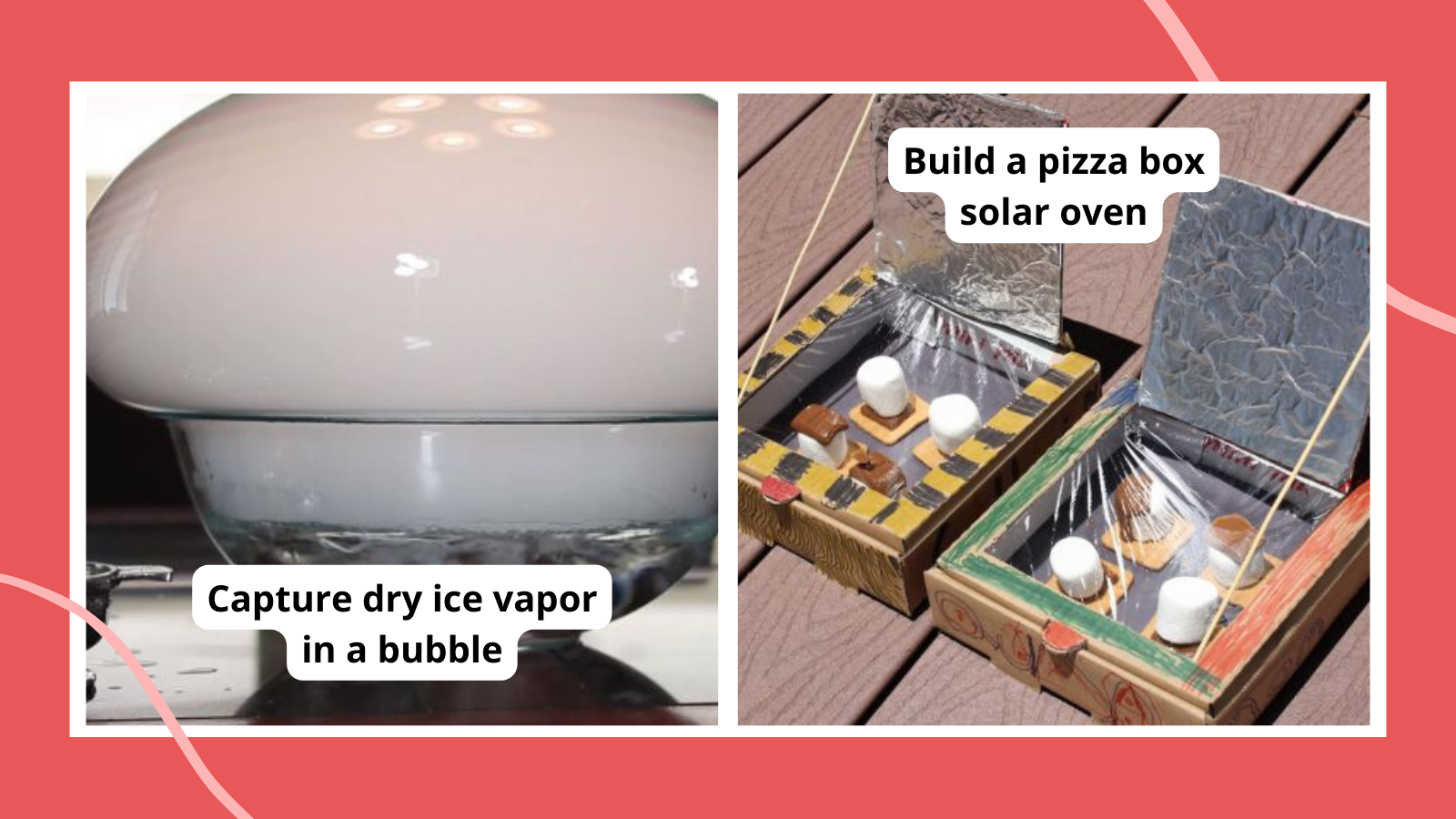
There’s something so fascinating about hands-on science experiments and projects. They make learning so meaningful and so much fun! These 5th grade science projects help kids explore biology, physics, chemistry, and a whole lot more. Try one at the 5th grade science fair, or use a few to liven up your lesson plans.
To make things even easier, we’ve rated every one of these 5th grade science projects based on difficulty and materials:
Difficulty:
- Easy: Low or no-prep experiments you can do pretty much anytime
- Medium: These take a little more setup or a longer time to complete
- Advanced: Experiments like these take a fairly big commitment of time or effort
- Basic: Simple items you probably already have around the house
- Medium: Items that you might not already have but are easy to get your hands on
- Advanced: These require specialized or more expensive supplies to complete
5th Grade Science Fair Projects
Stem challenge 5th grade science projects, 5th grade matter and energy science activities, more 5th grade science projects and activities.
Choosing a science fair project means finding a subject that really interests you and coming up with a unique question to answer. Use some of these 5th grade science fair project ideas to create a cool experiment all your own.
Stop soil erosion with plants
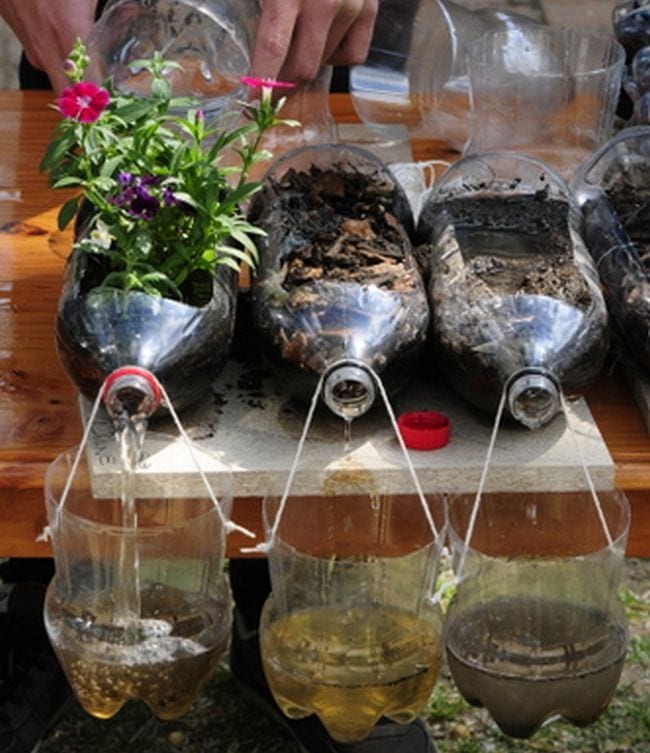
Difficulty: Medium / Materials: Medium
Soil erosion is a serious problem that can lead to natural disasters like landslides as well as causing problems for farmers, who lose valuable topsoil. Try this experiment to learn how plants help keep soil in place naturally, and change up the variables like soil composition or types of plants.
Learn more: Soil Erosion Experiment at Life Is a Garden
Blow square bubbles
Bubble science experiments are always a hit! In this one, kids construct a device to see if they can blow a square bubble instead of a round one.
Discover the delights of decomposition
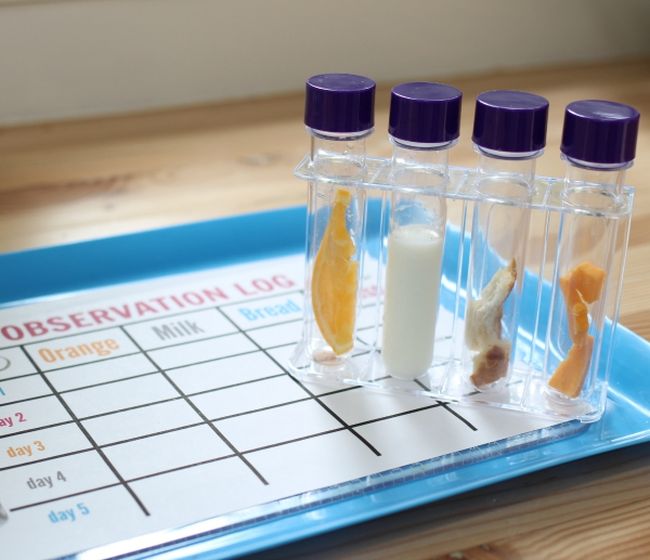
Difficulty: Easy / Materials: Medium
This is a good chance to apply the scientific method and practice your observation skills, using only basic kitchen supplies. Ask the question: “Which food will rot (decompose) the fastest?” Have students hypothesize, observe, and then report their findings. Get a printable observation sheet at the link below.
Learn more: Food Decomposition at No Time for Flash Cards
Mix up some magic sand
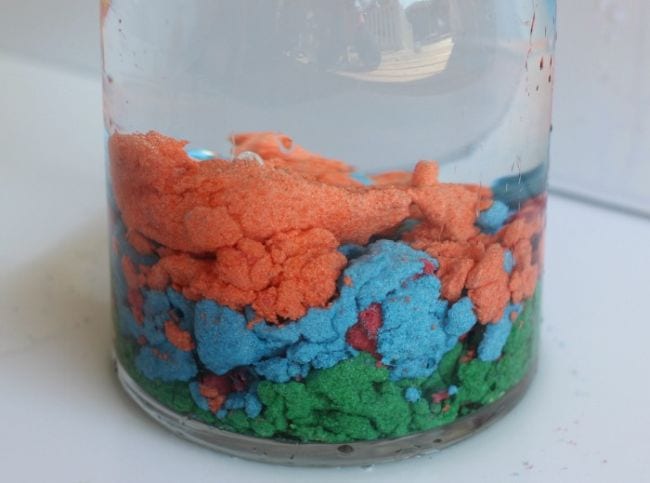
What if you could make sand that was “afraid” of water? This 5th grade science experiment uses waterproofing spray to create you-gotta-see-it-to-believe-it hydrophobic sand.
Learn more: Hydrophobic Sand at Teaching Mama
Make your own bouncy balls
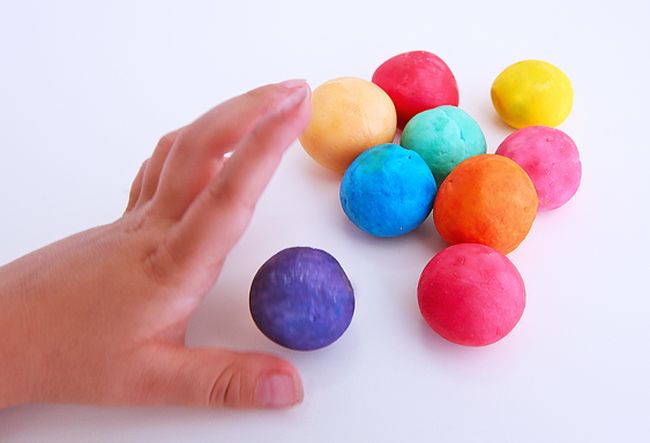
Students learn about polymers as they mix borax with cornstarch, glue, and water in this playful experiment. Experiment with size, shape, and ingredients to see which work best.
Learn more: DIY Bouncy Balls at Babble Dabble Do
Study water filtration
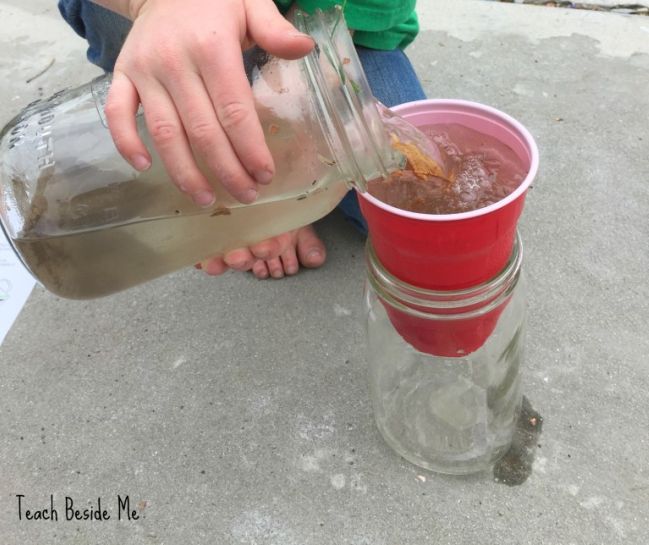
Difficulty: Easy / Materials: Basic
See the process of water purification firsthand. Layer coffee filters, sand, and gravel in the bottom of an empty cup punched with holes. Place the cup in an empty jar, pour in dirty water, and watch what happens. Mix up the variables, and you’ve got a cool 5th grade science fair project.
Learn more: Water Purification at Teach Beside Me
Find out if a dog’s mouth is cleaner than a human’s

Settle an age-old debate with this 5th grade science fair project. Collect saliva from both humans and canines with cotton swabs and place each sample in labeled petri dishes. Check the bacterial colonies in each and compare the results.
Learn more: Dog’s Mouth Project at Sciencing
Explore basic genetics

Send your students on a quest to find out more about their genes and inherited traits. The link below includes a printable chart they can use to learn about recessive and dominant genes.
Learn more: Inherited Traits at Education.com
Design a biosphere
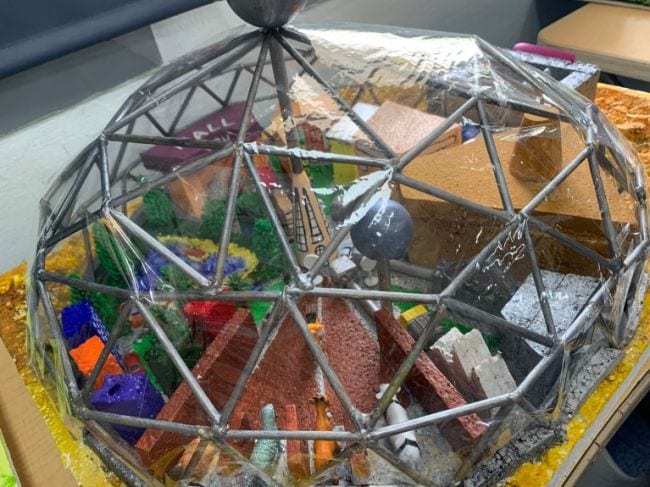
This project really brings out kids’ creativity and helps them understand that everything in a biosphere is really part of one big whole. You’ll be overwhelmed by what they come up with!
Learn more: Biosphere Project at Laney Lee
Measure heat capacity of different liquids
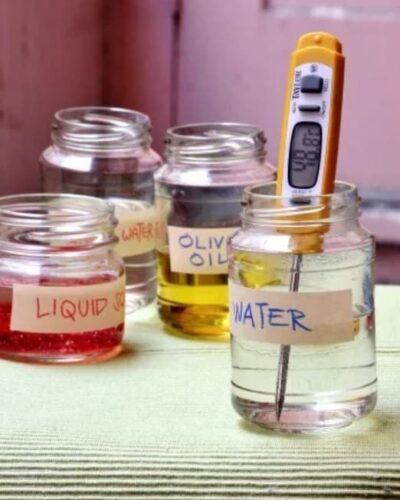
Your students will venture into the world of chemistry with this experiment that tests the heat capacity of different liquids, such as salt water, olive oil, and liquid soap, using a hot plate . They’ll incorporate math into their experiment when they plot their results!
Learn more: Heat Capacity at Education.com
A good STEM challenge can spark a terrific science fair project too. These also make terrific classroom activities for 5th grade science students.
Assemble an automatic water fountain
Water fountains were around long before humans harnessed the power of electricity to make pumps. Learn how they worked with this STEM challenge science project for 5th grade.
Race down a LEGO zip line
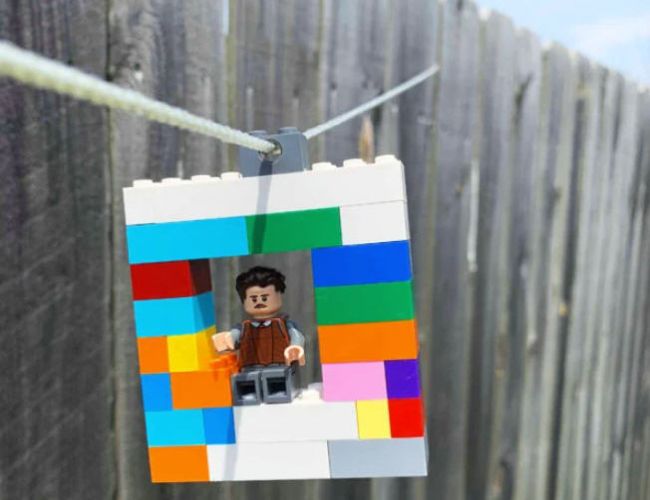
Every kid loves LEGO bricks, so incorporate them into your 5th grade science activities! Challenge kids to design and build their own zip line. You can set the parameters, like distance and slope, then let students get to work.
Learn more: Zipline at 123 Homeschool 4 Me
Slow your roll
Ball-run challenges are always fun, but this one has a twist. Your goal is to build a run that gets the ball to the bottom taking the longest time possible! This requires kids to think about friction, slopes, and other creative features.
Fly clothespin airplanes
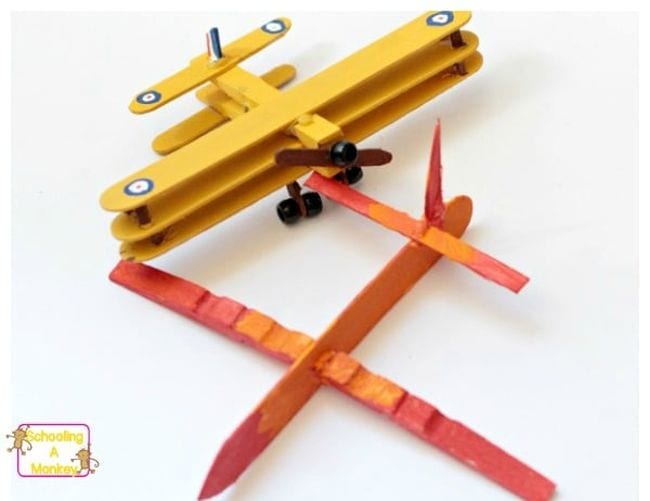
Put your 5th grade science students’ engineering skills to the test. Provide them with clothespins and wood craft sticks , and challenge them to build a realistic airplane. Bonus points if it can actually fly!
Learn more: Clothespin Airplane at STEAMsational
Spin a candle-powered pinwheel
Prove that hot air rises by using candles to spin a homemade pinwheel. Then experiment to see how the number of candles affects the spinning speed. (As always, make sure kids use fire under safe conditions.)
Set off a chain reaction
Learn about potential and kinetic energy when you try this cool 5th grade science experiment. All you need are wood craft sticks and a bit of patience.
Bounce on a trampoline
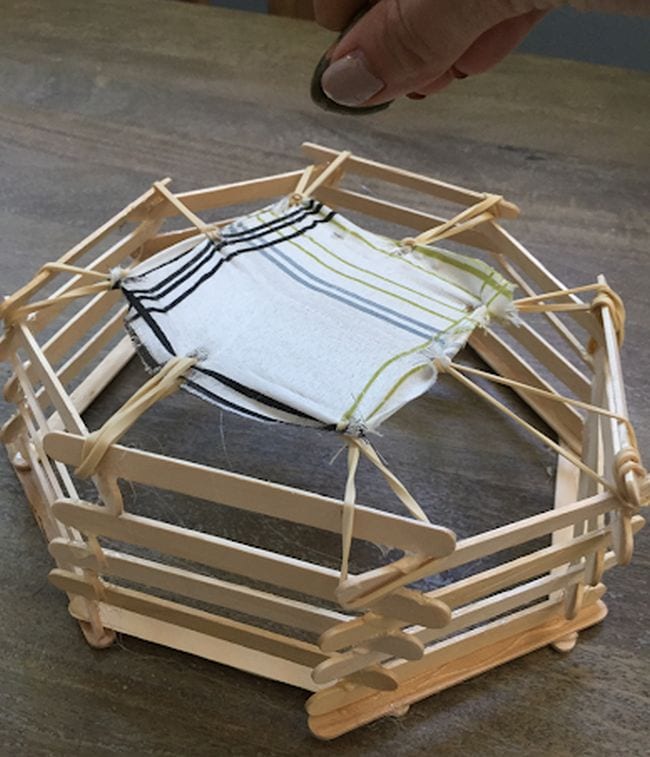
Kids love bouncing on trampolines, but can they build one themselves? Find out with this totally fun STEM challenge. Plus, check out more 5th grade STEM challenges here.
Learn more: Trampoline STEM Challenge at Student Savvy
Build a solar oven
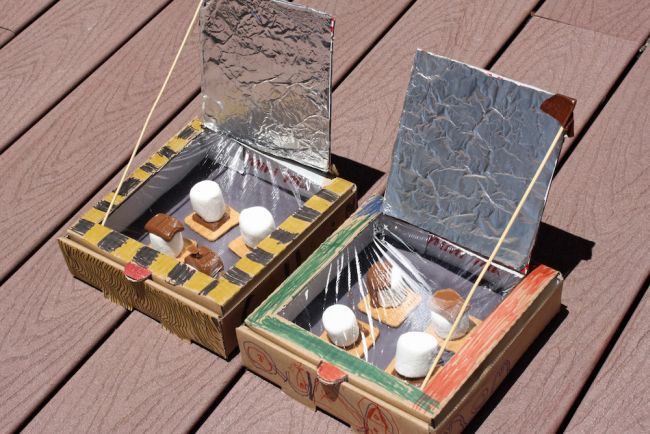
Learn about the value of solar energy by building an oven that cooks food without electricity. Enjoy your tasty treats while discussing ways we can harness the energy of the sun and why alternative energy sources are important. ( Love edible science projects? Get more ideas here. )
Learn more: DIY Solar Oven S’mores at Desert Chica
Launch your own bottle rocket
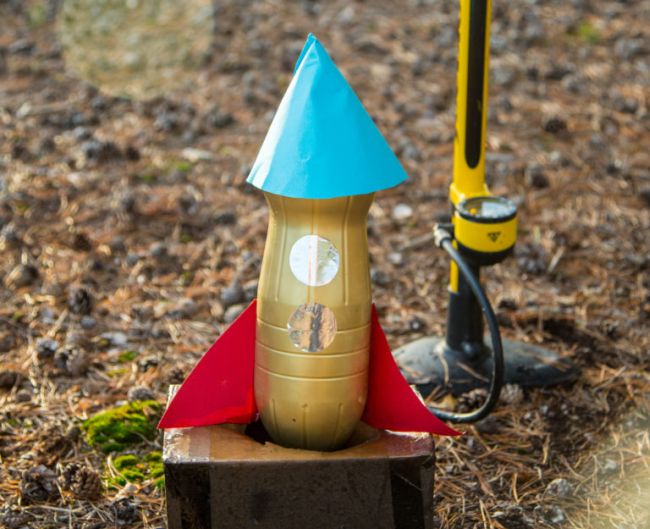
Blast off with a few supplies and a little help from the laws of motion. Encourage kids to design and decorate their rockets first and see which one can fly the highest!
Learn more: Bottle Rocket at Science Sparks
Peer through a cardboard microscope
Microscopes can be pricey, so make your own at home! This is the kind of 5th grade science fair project that will really wow the judges.
Build a snack machine
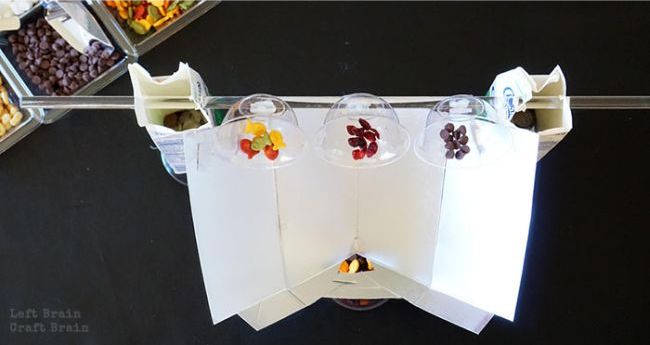
Incorporate everything students learn about simple machines into one project when you challenge them to build a snack machine! Using basic supplies, they’ll need to design and construct a machine that delivers snacks from one location to another. ( Get more candy experiments here. )
Learn more: Snack Machine Challenge at Left Brain Craft Brain
Use rubber bands to sound out acoustics
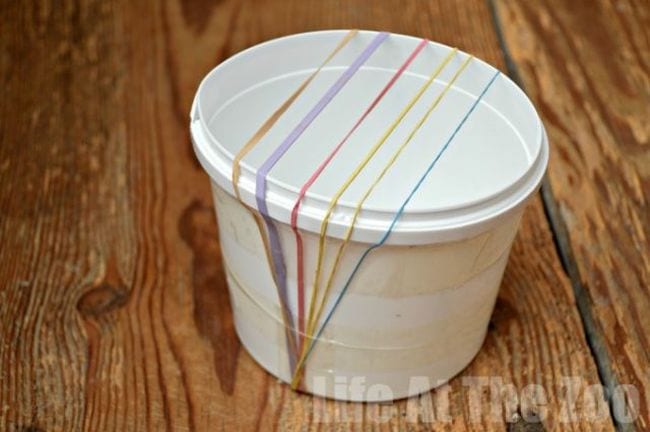
Explore the ways that sound waves are affected by what’s around them using a simple rubber band “guitar.” (Your students will absolutely love playing with these!)
Learn more: Rubber Band Guitar at Science Sparks
Assemble Archimedes’ screw
Difficulty: Medium / Materials: Basic
It’s amazing how often science looks like magic—until you understand the principles behind it. Such is the case with the simple pump known as Archimedes’ screw. It’s easy to build your own and makes for a cool 5th grade science fair project.
Recycle newspaper into an engineering challenge

It’s amazing how a stack of newspapers can spark such creative engineering. Challenge students to build a tower, support a book, or even build a chair using only newspaper and tape.
Learn more: Newspaper Tower at STEM Activities for Kids
Construct a sturdy bridge
To design a safe bridge that meets the needs of the community, engineers must understand the capabilities and limitations of the bridge. This project is great for budding 5th grade engineers as they simulate constructing a bridge that serves its purpose and keeps community members safe.
Every 5th grade science curriculum is different, but many include some common concepts. Learn about the states of matter, matter and its interactions, and energy science with these neat 5th grade activities.
Model the states of matter
Create simple models to show the arrangement of molecules in solids, liquids, and gasses. Ping-Pong balls are perfect for this. ( Find more states of matter activities here. )
Drink root beer floats
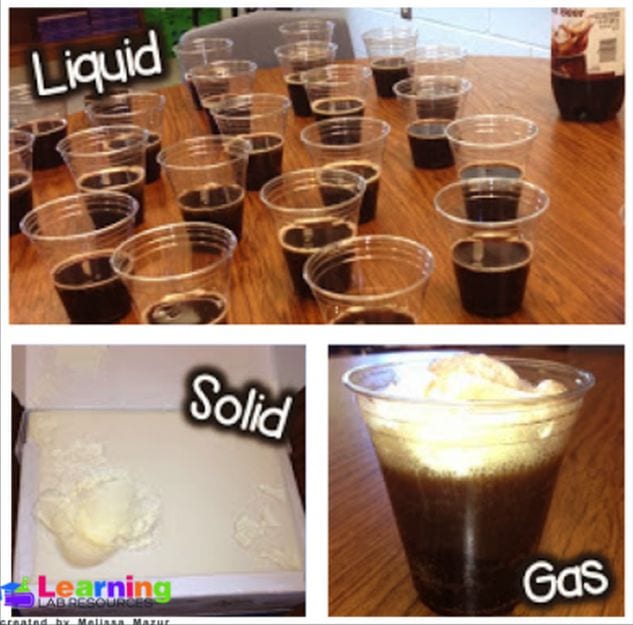
This is our favorite way to learn about the various states of matter! Treat time becomes a learning lesson with this 5th grade science matter activity.
Learn more: Teaching Matter With Root Beer Floats at Learning Lab Resources
Fill a bubble with dry ice vapor
Discover the science of sublimation by turning dry ice from a solid directly into a gas. Then play around with surface tension as the resulting vapor fills a giant bubble. This one is so cool to see in action!
Discover density with hot and cold water

There are a lot of cool science experiments you can do with density. This one is extremely simple, involving only hot and cold water and food coloring.
Learn more: Hot and Cold Water Density at STEAMsational
Learn to layer liquids
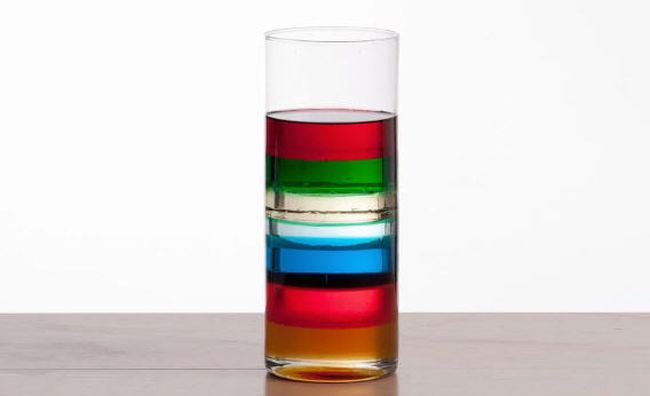
This density demo is a little more complicated than other science projects, but the effects are spectacular. Slowly layer liquids like honey, dish soap, water, and rubbing alcohol in a glass. Your 5th grade science students will be amazed when the liquids float one on top of the other like magic (except it is really science).
Learn more: Liquid Density at Wonder How To
Light(ning) it up indoors
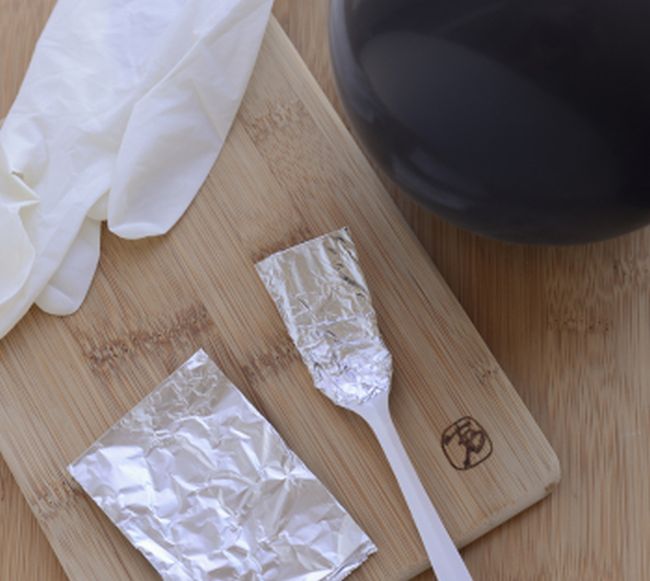
On a cool, low-humidity day, use a foil-covered fork and a balloon to create a “lightning storm” in your classroom. Turn down the lights to give students a better view of the static electricity you’re creating.
Learn more: Indoor Lightning at Education.com
Create convection currents
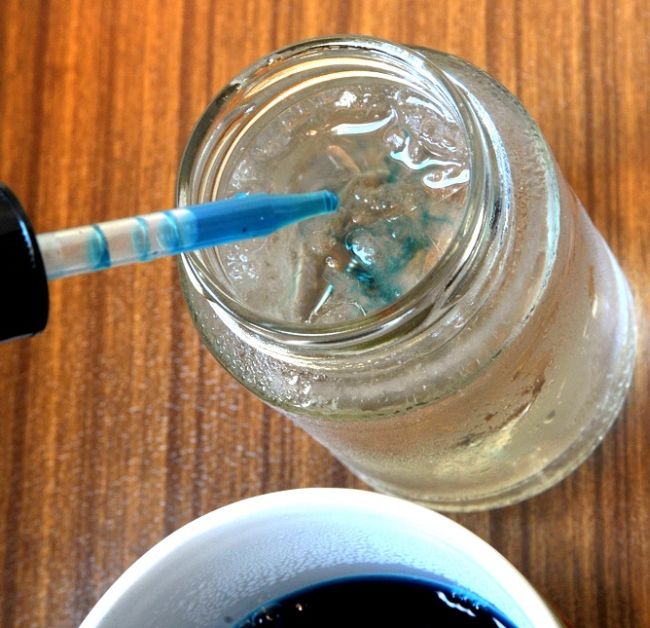
This easy experiment uses hot and cold liquids and some food coloring to explore the thermal and kinetic energy that creates convection currents. Take things a step further and research how convection currents work in large bodies of water, like oceans.
Learn more: Heat Convection at Education.com
Sink or swim with soda cans
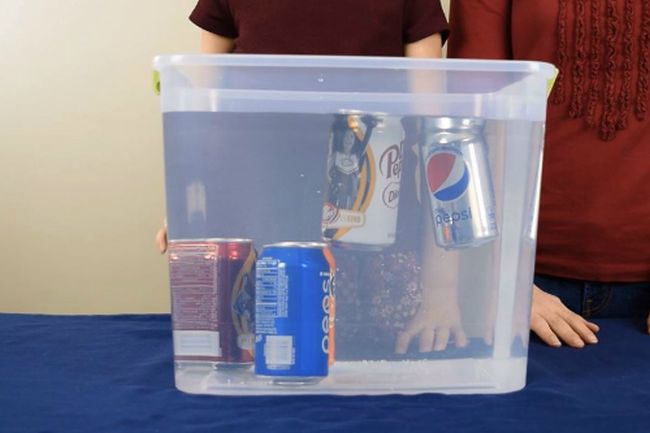
Here’s another easy density experiment. Place unopened cans of regular and diet soda into a bin of water to see which float and which sink. The differences are due to the use of sugar and artificial sweeteners.
Learn more: Sink or Swim at Cool Science Experiments HQ
Find out if water conducts electricity
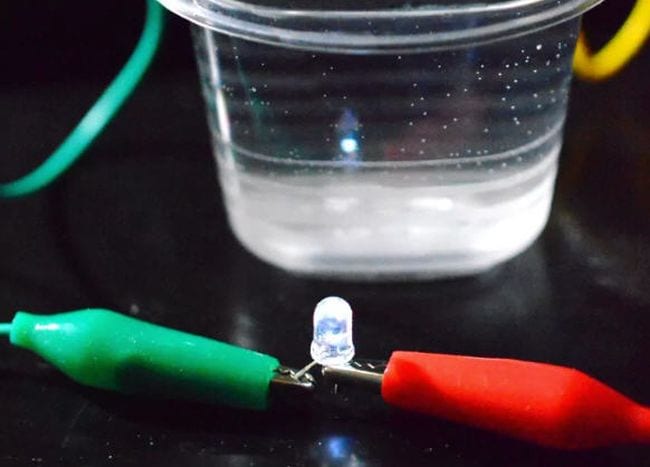
We always tell kids to get out of the water as a storm approaches. This 5th grade science project helps explain why. (Conductivity vs. non-conductivity is one of the properties of matter too.)
Learn more: Electricity and Water at Rookie Parenting
Blow up a balloon—without blowing
This is the classic science experiment that helps you teach the reactions between acids and bases, plus what happens when you mix different substances together. Fill a bottle with vinegar and a balloon with baking soda. Fit the balloon over the top, shake the baking soda down into the vinegar, and watch the balloon inflate.
Learn more: Balloon Experiments
Use these hands-on science activities to spice up your lesson plans or as enrichment projects for science-loving kids to try at home.
Erupt a baking soda volcano
Need a 5th grade science fair project? Go with a classic: the volcano ! This one’s made from salt dough, which is easy to work with and inexpensive to make.
Learn more: Baking Soda Volcano Experiment (With Free Printable Student Recording Sheet)
Peel an orange to understand plate tectonics
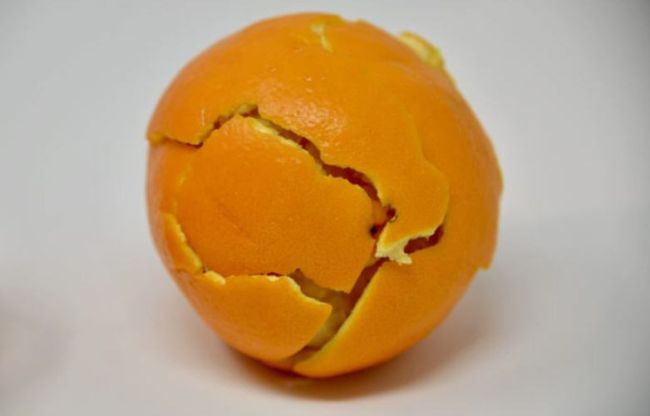
If students are learning earth science, use an orange to make plate tectonics easier to understand. Peel it, then reassemble it and look at the pieces as plates floating on the Earth’s mantle.
Learn more: Orange Tectonics at Science Sparks
Discover the strength of eggshells
We think of eggshells as very fragile, but their shape makes them surprisingly strong. Try this experiment to learn why arches are such a useful shape in architecture.
Demonstrate the “magic” leakproof bag
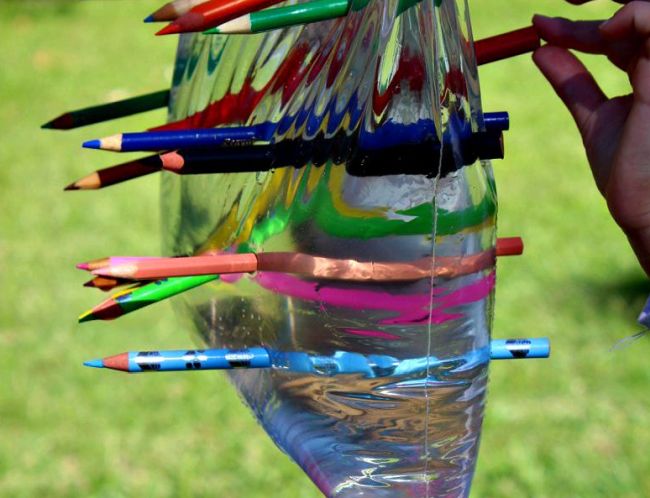
So simple and so amazing! All you need is a zip-top plastic bag, sharp pencils, and some water to blow your students’ minds. Once they’re suitably impressed, teach them how the “trick” works by explaining the chemistry of polymers.
Learn more: Magic Leakproof Bag at Paging Fun Mums
Explore the science of glow sticks
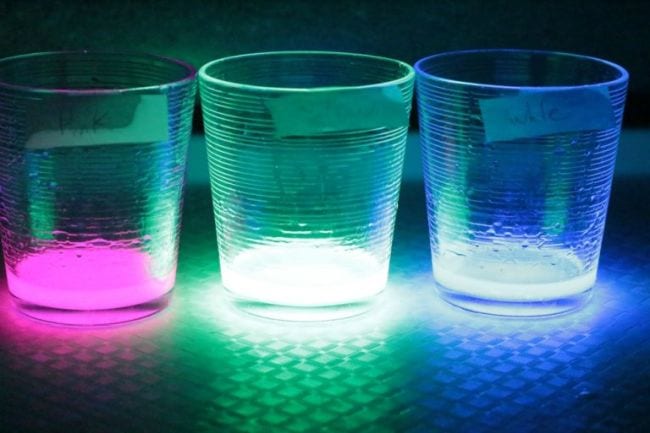
Glow sticks are always a big hit with kids, so they’ll have a terrific time learning about the chemical reactions that make glow sticks work.
Learn more: Glow Stick Science Experiment at A Dab of Glue Will Do
Grow crystal snowflakes
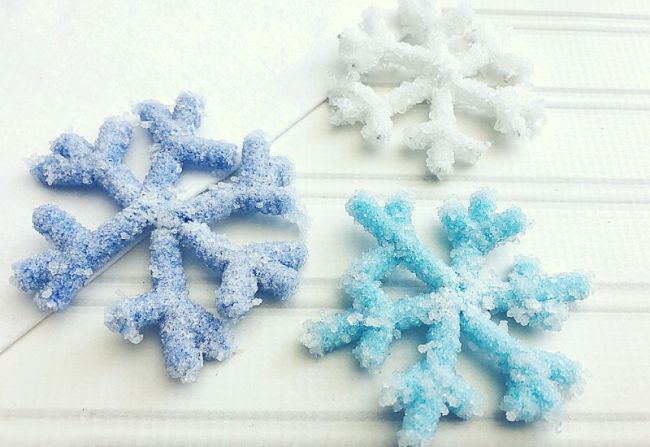
Kids love crystal projects, and this one results in winter decorations for your classroom. Your students will learn about supersaturated solutions and crystallization. ( See more winter science activities here. )
Learn more: Crystal Snowflakes at Little Bins for Little Hands
Escape from quicksand
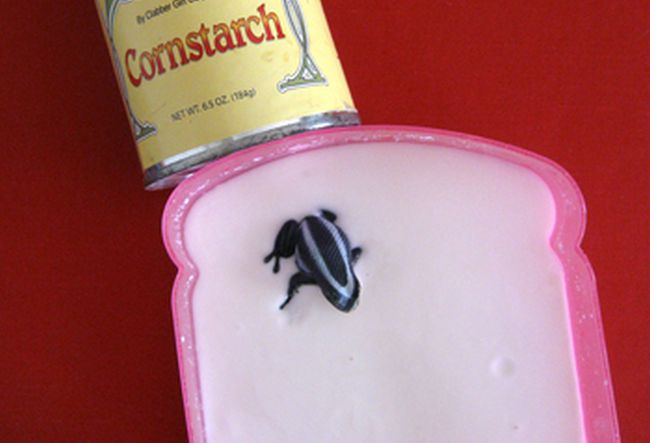
Dive deep into the science of quicksand and learn about saturation and friction along the way. You’ll create a small “quicksand” pool from cornstarch and water, then experiment to find out the best ways to escape.
Learn more: Quicksand Experiment at Education.com
Watch the heart beat with marshmallows
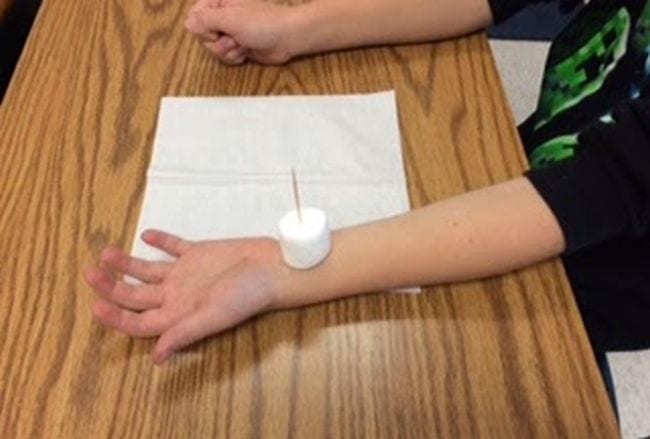
If you can get your 5th grade science class to quiet down enough for this one, they might be able to see a marshmallow jump with each beat of their hearts!
Learn more: Heartbeat Marshmallows at Growing Grade by Grade
Make a foil bug walk on water
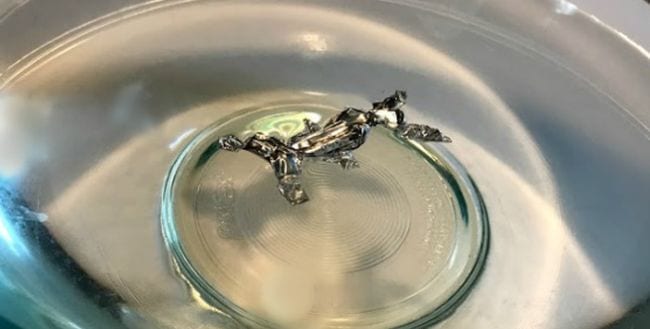
Surface tension allows water striders to dance across the surface of the water. Re-create this scientific phenomenon with little “bugs” made of aluminum foil.
Learn more: Foil Water Strider at The Homeschool Scientist
Find out how bile breaks down fat
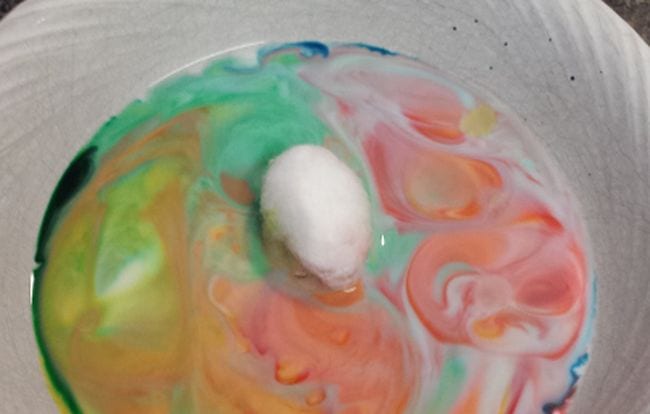
Learning about the digestive system? This 5th grade science demo explores the purpose of the bile produced by the liver, which breaks down fat.
Learn more: Bile Experiment at Simple Southern
Construct a homemade lava lamp
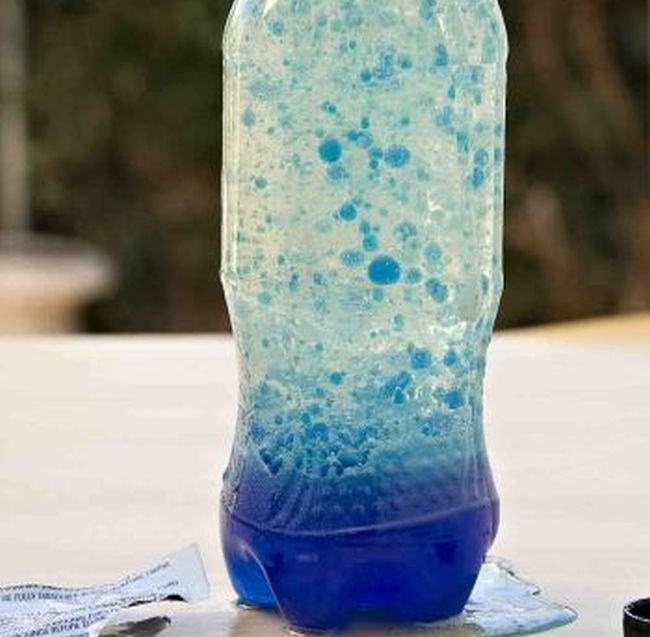
This 1970s trend is back—as a 5th grade science project! Learn about acids and bases while putting together a totally groovy lava lamp.
Learn more: Homemade Lava Lamp at Education.com
Investigate osmosis with gummy bears
Gummy bears are not only tasty, but they can also help teach your 5th graders about the concepts of osmosis and equilibrium as well as solvents and solute.
Replicate a sunset
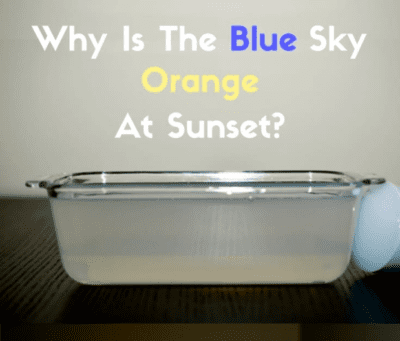
With just water, milk powder, a flashlight, and a glass dish, your 5th graders will investigate why the sky appears to change colors as the sun sets.
Learn more: Sunset Sky at Rookie Parenting
Defy gravity with floating water
This one might cause a bit of a mess, but it’s only water, and it’s all in the name of your students discovering air pressure. All you’ll need is a cup, index card, water, and crossed fingers that your classroom doesn’t become a puddle!
Model constellations

Space delights students of all ages. The mystery and mystique is intriguing, and creating a constellation out of pipe cleaners is a fun STEM activity to explore the night sky.
Learn more: Constellations Model at STEAM Powered Family
Continue the STEM learning with these 5th Grade Math Games for Teaching Fractions, Decimals, and More .
Plus, sign up for our newsletters to get all the latest teaching tips and ideas straight to your inbox..
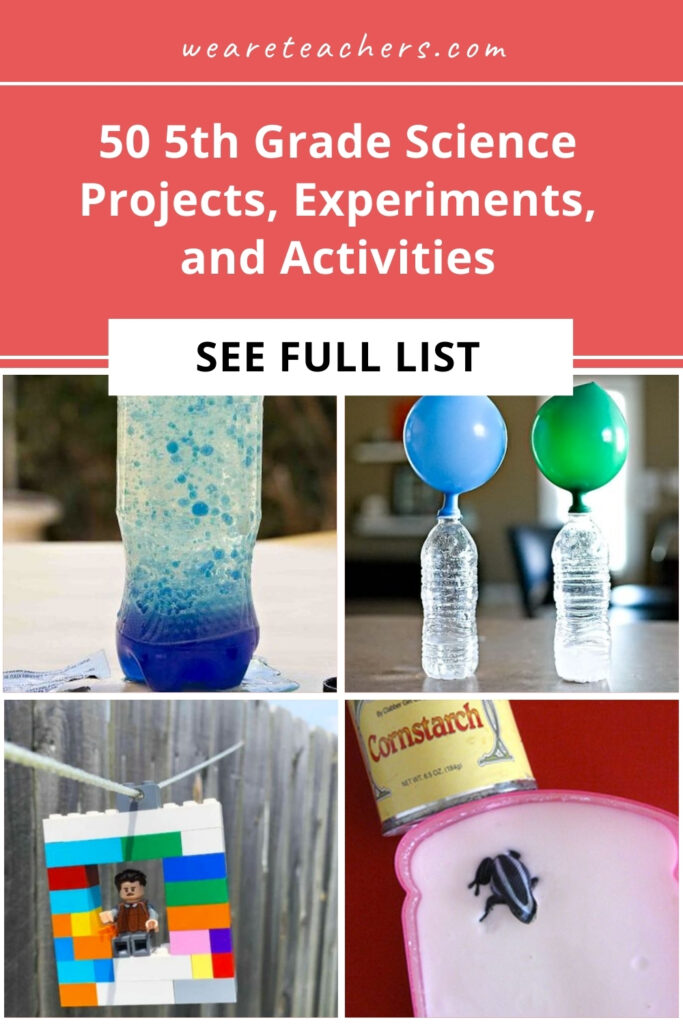
You Might Also Like
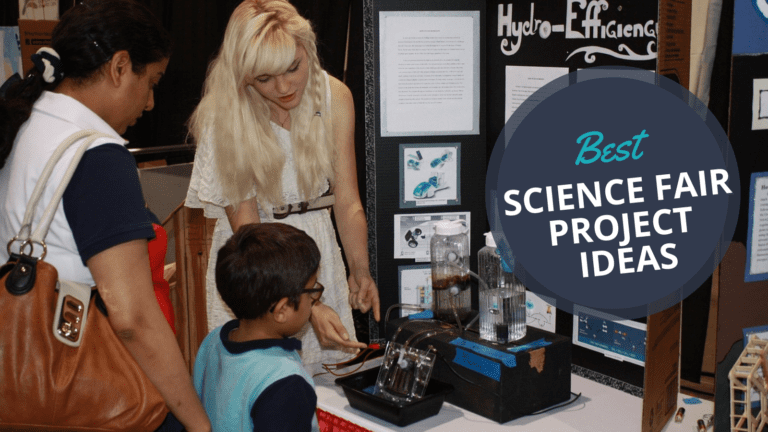
The Big List of Science Fair Project Ideas, Resources, and More
Options for every age, interest, and skill level! Continue Reading
Copyright © 2023. All rights reserved. 5335 Gate Parkway, Jacksonville, FL 32256
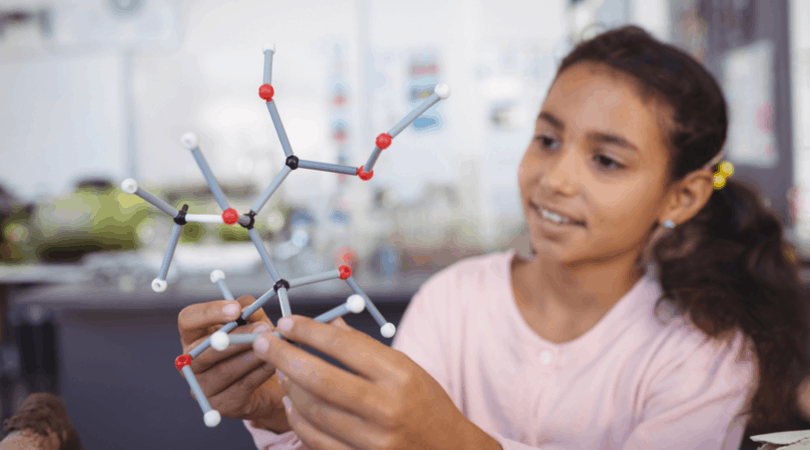
Science fair can be the highlight of your child’s 5th grade school year. We have rounded up 31 great fifth grade science fair ideas to get you started! With one previous science fair behind his or her belt, your 5th grader is now ready for a little more challenge.
In this post, we’ve assembled 31 easy science fair project ideas for 5th grade. We link each project description to its original source, where you can get more information and step-by-step instructions.
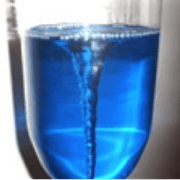
Tornado in a Bottle
In this fascinating experiment, water will create a channel as it is emptied from a bottle. A device connecting the two bottles allows the water to empty into a second bottle.
Recommended for Grade 5.
Source: www.scinado.com
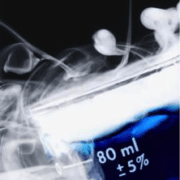
Effects of Temperature on the Sublimation of Dry Ice & How Soap Reacts in the Microwave
Two projects in one! Testing how temperature affects two different solids: dry ice and soap.
Source: GlobalPost.com

Do People Have a Dominant Side of Their Brain?
These experiments will help the scientist to determine if people have a dominant hand, foot, eye or ear. A great behavioral discovery project.
Recommended for Grades 5-6.
Source: www.faculty.washington.edu
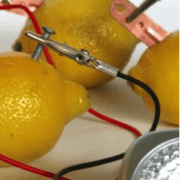
When life gives you lemons, make a battery!
Lemon Power is a fascinating experiment that you can attempt to duplicate with other fruit. Which fruit makes the best battery? Experiment and find out!
Recommended for Grades 4-5.
Source: www.kidsactivitiesblog.com
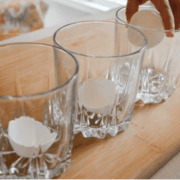
A Science Fair Project on Tooth Decay by Jennifer Elrod
Doing an experiment on tooth decay is both beneficial and interesting. It only requires a few inexpensive materials and a week’s worth of observation and record keeping. The experiment requires no work after the initial setup.
Source: www.ehow.com
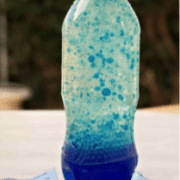
Homemade Lava Lamp by Alexa Bach McElrone
This project takes about 2 hours to complete the experiment and the write-up. Kids will get to explore the relationship between oil and water in terms of density as well as hydrophilic/hydrophobic compounds.
Source: http://www.education.com
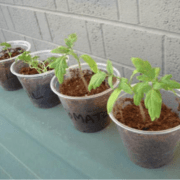
How the Amount of Light Affects Germination and Growth.
The goal of the project is to find out how different lighting conditions affect seeds germination and growth. This article will give you the step by step procedure for this project.
Source: www.scienceprojectlab.com
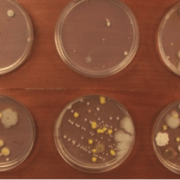
Growing Bacteria in Petri Dishes by Steve Spangler
A Petri dish prepared with nutrient agar (a seaweed derivative with beef nutrients) is an ideal food source for the bacteria you’ll be growing. Collect samples from around the house or classroom and record the results for the one with the most bacteria.
Source: www.stevespanglerscience.com
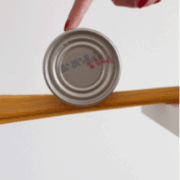
Bridge Project by Sarah Benton
This project explores the basic physics of bridges. The goal is that the student will develop an understanding through experimentation of which shapes are the most structurally strong, and that many factors are taken into account in engineering and building.
Source: www.education.com
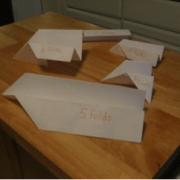
Paper Airplane Science Fair Project
Create your own hypothesis about paper airplanes, then start your experiment. This article gives you all of the information you need.
Source: www.easy-science-fair-projects.net
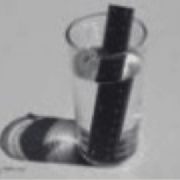
Barometer Science Project
Make your own barometer and then use it to test weather conditions on a dry day, a rainy day, a cloudy day, etc.
Source: www.hubpages.com
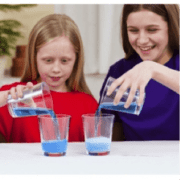
How Do Antacids Work?
In this activity, learners explore the chemical reaction between water and effervescent antacid tablets. This hands-on activity models how a material can act differently when it’s nanometer-sized. Learners compare the reaction rate of an effervescent antacid tablet that is broken in half with one that is broken into many pieces.
Source: www.howtosmile.org
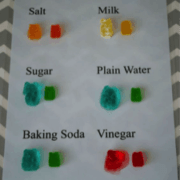
Gummy Bear Osmosis
Do Gummy Bears dissolve in water? In vinegar? In liquid soap? Test your hypothesis on a variety of liquids and find out.
Source: www.homeschool.com

Is Your Dog’s Mouth Cleaner than Your Mouth?
Is it a myth or fact that a dog’s mouth has less germs that a human’s mouth? Follow these simply instructions and test for yourself.
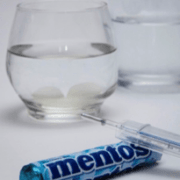
Does Mint Actually Cool Things Down? By Jennifer Penn-Chiu
Mint-flavored gum, breath fresheners, and hard candies often advertise that mint has a cooling effect, and use images of frost and ice to demonstrate this sensation. But is this sensation a result of the mint actually lowering temperatures?
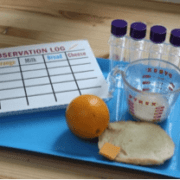
Which Food Will Rot First?
This example tests the rotting of 4 different foods, but your scientist can test as many different types of food as they can imagine.
Source: www.notimeforflashcards.com
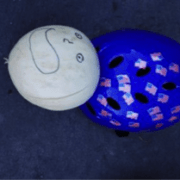
Helmet Crash Test by Steve Spangler
Not only will your little scientist gain a better appreciation for using a helmet, she can also learn more about the science behind it. Try testing different size melons and different height drops.
Source: www.parenting.com
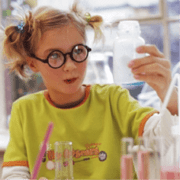
Can Magnets Affect the Growth Process of Radish?
In this experiment, your scientist will determine whether magnets make radish plants grow faster or slower.
Source: www.buzzle.com
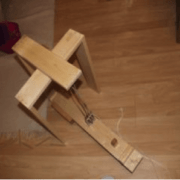
Playground Teeter-Totter
The goal of this project is to create a compound machine using pulleys and levers that would be able to lift a Barbie doll up and down by pulling a string by the player. A common problem on the playground is that you sometimes can’t find another person to go on the teeter totter with you.
Recommended for Grades 4-6.
Source: www.projects.juliantrubin.com
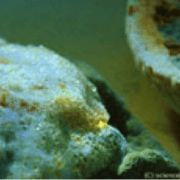
Growing a “Mold Garden”
The goal of this project is to grow different mold species on different kind of substrates to find out if the same bread mold species will grow on all of them. Do all mold species have the same taste and preferences?!
Recommended for Grades 4-5
Source; www.scienceprojectlab.com
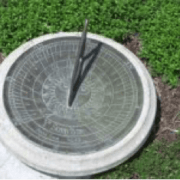
Making a Simple Sundial and Testing Its Accuracy
Learn how to make a sundial and then test its accuracy with a series of experiments.
Recommended for Grades 4-6
Source: www.explorable.com
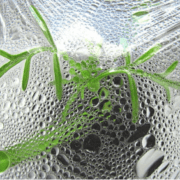
A Pint Pot Planet
This experiment will demonstrate the water cycle and test different hypotheses on rainfall and the water cycle.
Source: www.raisingsparks.com
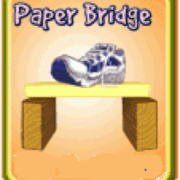
Build and Test a Paper Bridge
This project helps you discover how to create a strong bridge using just paper. Instructions also offer some additional parameters to add into the experiment.
Recommended for grades 4-5
Source: www.teacherstryscience.org
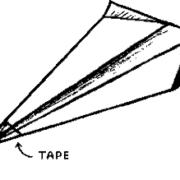
Paper Airplane Experiment
Experiment to find the best design for a paper airplane
Source: ScienceFairMath
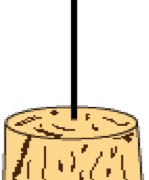
Use the Energy in a Peanut to Heat Water
Just about everything has potential energy stored in it. The problem is releasing that energy to be able to do some work.
A tiny peanut contains stored chemical energy. When we eat them, the stored energy is converted by our bodies so we can do work. We can also use the energy in a peanut to heat a container of water.
Recommended for grades 4-6
Source: www.energyquest.ca.gov
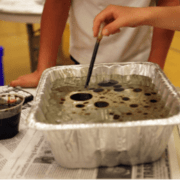
Oil Spill Experiment
This experiment will demonstrate the detrimental effects of oil spills to marine life
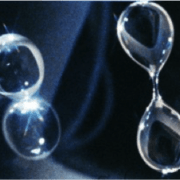
Make Your Own Microscope with Water
Make a simple microscope using water and take a closer look at the world around you.
The lens you create with water works like a microscope or magnifying glass, allowing you to see objects in much greater detail than if you were just looking with the naked eye.
Source: www.sciencekids.co.nz
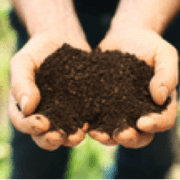
How Does the pH of the Soil Affect the Type of Plants?
Plants’ survival can be based on the pH of the soil. This experiment lets you test soil pH based on the type of plants that live there.
Source: www.livescience.com
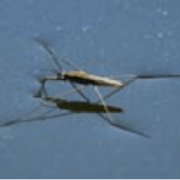
Surface Tension Experiment
Surface tension is one of water’s most important properties. It is the reason that water collects in drops, but it is also why water can travel up a plant stem, or get to your cells through the smallest blood vessels. You can experiment with surface tension using just a few household items.
Source: www.hometrainingtools.com

404 Not found
- Skip to primary navigation
- Skip to main content
- Skip to primary sidebar
Teaching Expertise
- Classroom Ideas
- Teacher’s Life
- Deals & Shopping
- Privacy Policy
5th Grade Science Project Ideas: Experiments, Model Building, DIYs, Challenges, And More
March 8, 2024 // by Sean Kivi
Hands-on experiments. They’re one of the greatest tool tips at a teacher or parent’s fingertips to ensure that their students understand new concepts. But where do you start with these? How do you know which experiments are the best for your 5th-graders, or which ones will help to promote learning in the most stimulating way? Well, look no further. This list of 65 5th-grade science projects compiles the best activities for encouraging your students’ discovery and passion for science, from biology, physics, chemistry, and more.
1. Bouncing on a trampoline
Get your kids learning while exercising! This mini trampoline experiment will help your 5th graders by challenging their construction skills and understand the basic principles of a rubber band. By adjusting their own contraption, they will discover how to make the highest bounce.
Learn More: Teach Student Savvy
2. The “magic” leakproof bag
Challenge your students to create a leakproof bag. They might think it’s magic, but you can use it to teach them all about the science of polymers. You can even develop on this by using other materials, too, like plastic bags that have a different size or thickness. Definitely one for your messier kids!
Learn More: Steve Spangler Science
3. Clothespin and popsicle stick airplanes
For this engineering activity, your student will need to create all sorts of airplanes using different household items, such as popsicle sticks and clothespins. Using different methods and construction material, they will see if their planes can actually fly! This experiment also has excellent links to STEAM, too.
Learn More: STEAMsational
4. Tornado in a Bottle
Bring the outside world inside with this fun and simple science experiment. You’ll only need a few things, like a bottle, water, and glitter, to help your students to understand the science behind natural disasters like a hurricane. You can even develop this to teach them about centripetal force as well.
Learn More: Cool Science Experiments Headquarters
5. Float or Sink Pop Cans
Your students might already be familiar with the version of this experiment that uses eggs, so why not shake things up with soda cans instead? This experiment is a great way for your students to learn about density with different types of artificial sweeteners. You can also teach them about the dangers of too much sugar!
6. Invisible Ink
Your students will love transforming into secret agents with this amazing activity! Using baking soda as ink, they’ll turn their writing invisible. You can then reveal the message with grape juice or a heat source to teach them about paper fibers.
Learn More: ThoughtCo
7. D.I.Y. Snowflakes
All of the fun of snow, but with none of the mess and cold! This is a perfect way to teach your students about molecules and the separation of liquids in a way that they’ll find interesting. You can also use these as beautiful decorations all year round.
Learn More: Little Bins for Little Hands
8. Quicksand escape
Have you ever seen your students playing superhero games together? Well, this is your chance to turn those games into learning! This experiment scaffold kids’ learning of solid and liquid properties by learning through play. They will also discover the best ways to escape from this tricky texture!
Learn More: Education.com
9. Solar S’mores
Create a solar oven that traps the Sun’s energy in this delicious science experiment. Your students are to enjoy these tasty treats while they learn about alternative energy resources and greenhouse gases.
Learn More: Desert Chica and Climate Kids NASA
10. Monster Dry Ice Bubble
This experiment does require a little preparation, but it’s sure to be a hit with your students. They will explore the process of sublimation and learn about pressure as they watch the bubbles expand. As this involves dry ice, you will need to be careful with it.
Learn More: Wonder How To
11. Soil Erosion Experiment
This is a great activity to do outdoors on a nice day, as your students will find out about soil erosion and its harmful effects on the natural world. They’ll discover the importance of having vegetation cover the soil.
Learn More: Orlando Science Center
12. Newspaper STEM Challenge
Put those old newspapers to use in this innovative experiment that will foster the creative engineering skills of your kids. They will not only build up their teamwork skills but also develop their problem-solving capabilities by creating their own constructions using only paper materials. This makes it an excellent tool for introducing STEAM engineering concepts.
Learn More: STEM Activities for Kids
13. Create a Bouncy Ball
Polymers are a hard concept for students to wrap their heads around, so you’ll want to keep the borax aside for this fun learning experiment. You’ll only need a few other spare ingredients to help create your own bouncy balls for your students. They can even play with them afterward!
Learn More: Babble Dabble Do
14. Build a Snack Machine
Yet another delicious experiment, this one involves learning and applying everything they know about simple machines to create their own Mimi snack machine. It only requires a little basic mechanical engineering but it can be a little challenging trying to re-allocate the snacks.
Learn More: Left Brain Craft Brain
15. Hot and Cold Density
If you’re looking for a quick science experiment, check out this rainbow density jar experiment. In less than 10 minutes, your kids will explore challenging concepts like water density, molecule science, and more. Try using food coloring for even better results!
Learn More: STEAMsational
16. Build a Bridge
Challenge your students to re-construct their own models of famous bridges around the world to see which one is the strongest. You should encourage your students to make predictions about each bridge’s strongest design and weight limitations before testing.
Learn More: Education
17. Testing Heat Capacity
This heat capacity experiment will answer any questions that your students have about why water takes so long to boil in comparison to oil. Your 5th-graders will also understand the different ways that liquids absorb heat and the amount of heat required to modify the object’s temperature by a certain amount (heat capacity).
Learn More: YouTube
18. Rock Candy
The tasty experiments continue with this rock candy creation. You can use it to show your kids the shape of sugar on a bigger scale. They will need your help with mixing boiling water, but they’ll definitely be able to enjoy the sweet results!
Learn More: Steve Spangler Science
19. Sunlight vs. Artificial Light
Your students will learn about photosynthesis and the factors that can affect it in this science experiment. They will investigate whether plants grow better under natural sunlight or artificial light, as well as the plants’ general health, too.
20. Make a Compass
This excellent experiment is a great introduction to ideas about magnetism and the Earth’s magnetic field. Your students will make their own compass with a magnetized needle. Try challenging your students to compare the differences between magnetic north and geographic north.
21. Musical Glasses
Make some cross-curricular connections with this charming project. Using basic knowledge of physics, your students will create their own musical glasses of water. By studying the different types of material used, they can explore the various properties of glass with these musical masterpieces.
Learn More: Teach Beside Me
22. Melting Ice Challenge
By adding different solids to ice cubes, your students will test what ingredients can be used to make ice melt faster. They can then record these to determine the melting time of each material. You’ll only need a few ingredients, such as salt, sugar, or baking soda.
Learn More: Little Bins Little Hands
23. Exploring Fluorescence
This experiment will help your students to solve the mystery of “black lights” in an interesting way. It will also introduce them to the power of ultraviolet light and the electromagnetic spectrum, as well as the different ways that black light can be used.
Learn More: Supply me
24. Flying Popsicle Sticks
Definitely one for your more active students! They’ll simply love learning about potential by weaving popsicle sticks together, then discovering kinetic energy when they throw them. You can challenge them further to see how long of a chain they can make.
Learn More: Steve Spangler Science
25. Chalkboard Slime
Almost all 5th-graders love playing with slime, and this experiment is sure to be no different. By adding a few extra ingredients to a normal slime recipe, they’ll create their own slime that is thicker than ever before. An unmissable tool for learning about polymers.

26. Water Conductivity
This is a simple experiment, but it is certainly effective! Your 5th-graders will finally be able to understand the dangers of touching electrical sockets with wet hands. They’ll learn about conductivity and whether water really works as a conductor or not.
Learn More: Rookie Parenting
27. Magic Marker Stick Man
Your students will think this marker stick man is magical when it comes to life! Instead, you can use this viral experiment to explain the solubility of materials and the use of adhesives.
Learn More: Gizmodo
28. Making Lightning
A science experience that allows you to bend electricity to your will , even bring it … into the classroom? Dim the lights and bring on a foil-covered fork to find out how static electricity is created.
29. Watching the heartbeat with marshmallows
Mix this delicious treat with science to help your students learn about the circulatory system. They’ll see how the marshmallows “jump” with their heartbeats and understand even one of the hardest units on the human body.
Learn More: Growing Grade by Grade
30. Water Filtration
Demonstrate the water purification process as part of this engaging experiment. Your 5th-graders will explore ideas about water pollution and how to remedy it. You can try expanding on this by using different materials like oils and food coloring to see what happens.
31. Make Oxygen with the help of a plant
A plant’s ability to make oxygen is the main reason that we are alive today. Ene still, this is a difficult concept for students to understand. This project will help you teach how plants help us by producing oxygen. Try different plants to see which ones are best at producing the air we breathe.
Learn More: MEL Science
32. Pendulum Painting
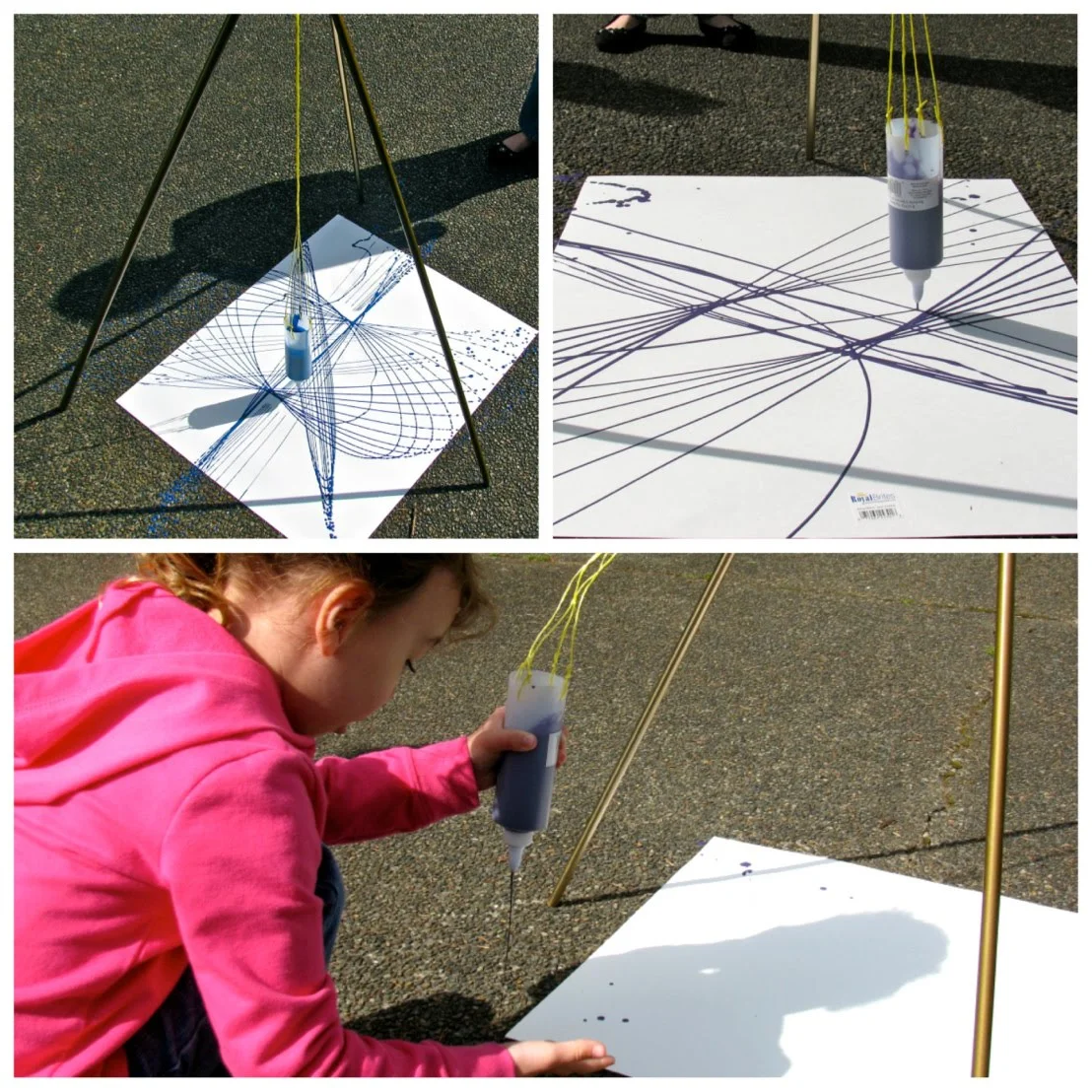
This hands-on activity will help your students learn about important science concepts of potential and kinetic energy while making beautiful art they can be proud of.
Get painting at Jenny Rambles WordPress
33. Greenhouse Gases Experiment
Learn about how greenhouse gases affect the temperature of the planet by using baking soda and lights. You create a chemical reaction using baking soda and water to understand the effects of carbon dioxide on the atmosphere. Have fun!
Learn More: Da Vinci TV
34. Cabbage Chemistry Acid-Base Science Project
A great chemistry science fair experiment that will help your students learn about how acids, neutrals, and bases work. You will make a red cabbage acidity indicator. It’s a smelly but engaging experiment, so plug your nostrils and get to testing acidity.
35. Acid Rain Earth Science Effects
Acid rain is a big problem! It is created when we burn fuels to make electricity and has devastating effects on the areas where it falls. This project will teach Earth science principles by checking how acid rain affects chalk at different levels of acidity. Kids will love this!
36. Tooth Decay Model and Exploration
Teach your students the importance of oral health by demonstrating how tooth decay affects our teeth using our favorite body learning science experiment. You don’t need your teeth because you will use eggshells.
Learn More: Sciencing.com
37. Do Paper Clips Float?
This is a simple experiment to help your students understand surface tension. This is done with household products that you probably have lying around. You can substitute a paper clip for other items to see if they float and how surface tension affects the float-ability of objects.
Learn More: Champak World
38. Make a Heart with Pumping Blood Model
Many people think that engineering projects are only good for earth sciences, but they work great for life sciences too. Your students will build a model of the circulatory system and test how it works in this hands-on project.
Learn More: Exploratorium Teacher Institute
39. Electroscope Static Electricity
Built-up static electricity has given us all a shock once or again. This project aims to teach your students about how static electricity gathers and then shocks us. It can also teach about the best electrical conductors if you use various materials.
Learn More: The Kitchen Pantry Scientist
40. Apple Oxidation Experimentation
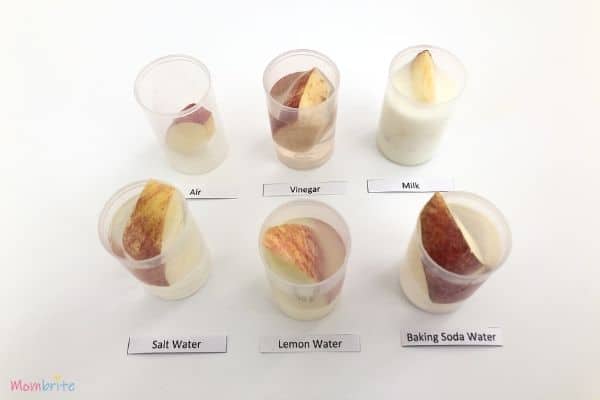
This is an engaging hands-on activity to get your students to understand the process of oxidization that takes place on objects left exposed to rain and water. We recommend using a variety of artificial sweeteners to test out how they affect the process.
Learn More: Mom Brite
41. Explore Density with a Lava Lamp
Acids and bases are a basic scientific concept and there is no better way to demonstrate them than with a groovy homemade lava lamp. Here you can also demonstrate the density of different liquids.
Learn More: OSC
42. Convection Currents in a Glass
By using water of different temperatures, students can observe convection currents when they drop food coloring in. This can be tied to ocean currents or currents in any large bodies of water.
Learn More: The Homeschool Scientist
43. Biospheres
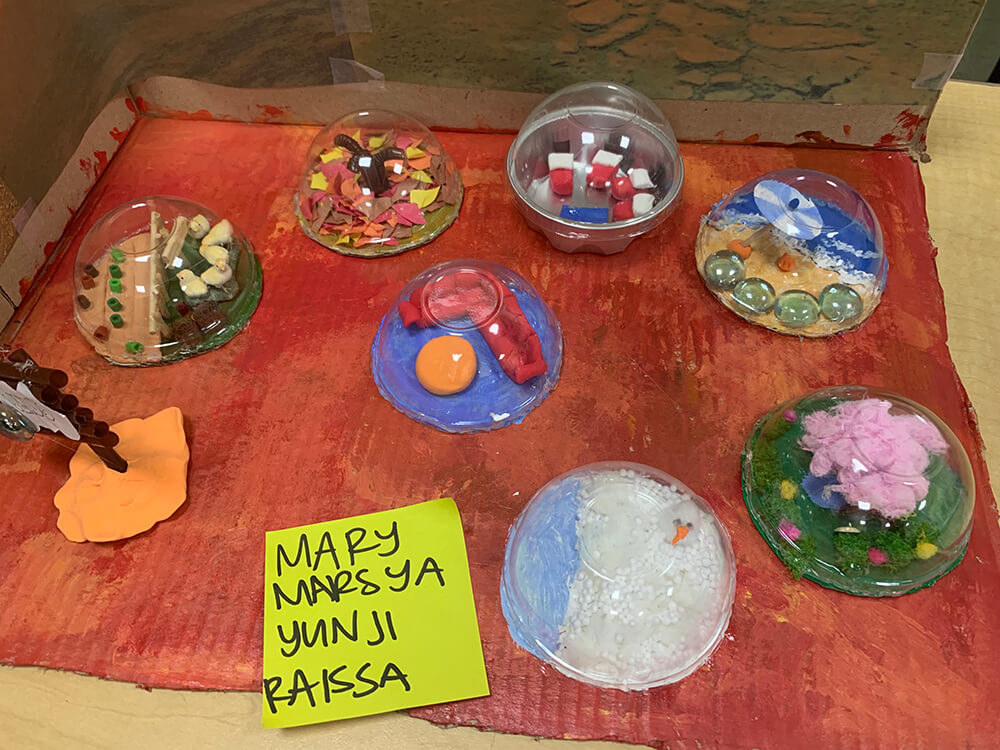
Students must create one or several biospheres, each enclosed to show how they are all different. They must explain how the parts of each biosphere are interconnected and how it would be affected if one is removed.
Learn More: Laney-Lee
44. Discover Genetics
Students must collect basic information about their family’s characteristics on a gene table. This table must then be interpreted in a family tree to show how some traits can be inherited.
Learn More: Science Buddies
45. Digestive demonstration
With simple kitchen items, students can observe how bile from the liver breaks down fat in the digestive tract. Biological science is a fascinating world the students love exploring.
Learn More: Simple Southern
46. Archimedes’ Screw
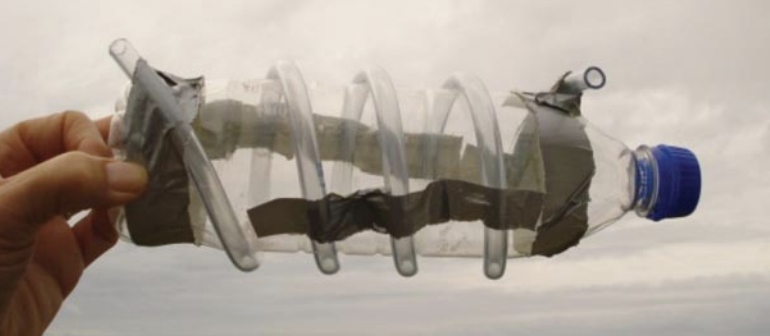
This ancient invention is something students can make themselves, showing how a simple invention can change lives.
Learn More: Steps Engineers Ireland
47. Bottle Rocket Competition
Bottle rockets are an exhilarating way for students to explore aerodynamics and the laws of motion. They can change many aspects of their rockets to see who can fly higher or stay in the air longer.
Learn More: Teaching Engineering
48. Catapult Launches

Students can build their own catapults from popsicle sticks and try and catch the launches or aim them at a target. They must make conclusions about how shorter or longer arms on their design will change the outcomes.
49. Candle Carousel
This experiment lets your students prove that hot air rises! Start by having them follow the instructions to make cuts on an aluminum plate and then let them decorate it with colored markers before attaching a metal nut and straw. Once it’s set up, they can then add candles underneath and they’ll see the pinwheel at the top turning. More candles will also make it spin faster!
50. Water Balloon Density

Fill balloons with various liquids and have students predict which ones will float. They must explore the properties of each liquid that helps them to come to their conclusion.
Learn More: 123 Homeschool 4 Me
51. Self-Watering Plant
One hands-on way to teach your students about plant physiology is by having them create a self-watering plant system. While discovering how to create an efficient irrigation system, they’ll get to learn how plants absorb water through their roots and stems via capillary action.
52. Bottle Terrarium

Imagine a miniature world within a bottle! That’s exactly what your students get to build when creating a plant-based microcosm! It’s an exercise in understanding ecosystems, the water cycle, and photosynthesis. As they craft a terrarium in a bottle, they’ll observe firsthand how environmental changes impact these systems.
Learn More: Soul Flower
53. Homemade Battery
Electricity is fundamental to our world, but how is it generated? Your students can unravel this mystery by creating a homemade battery using everyday objects like lemons and pennies. Through this project, they’ll learn about core concepts such as current, voltage, and electrochemical reactions.
54. Dancing Rice Experiment
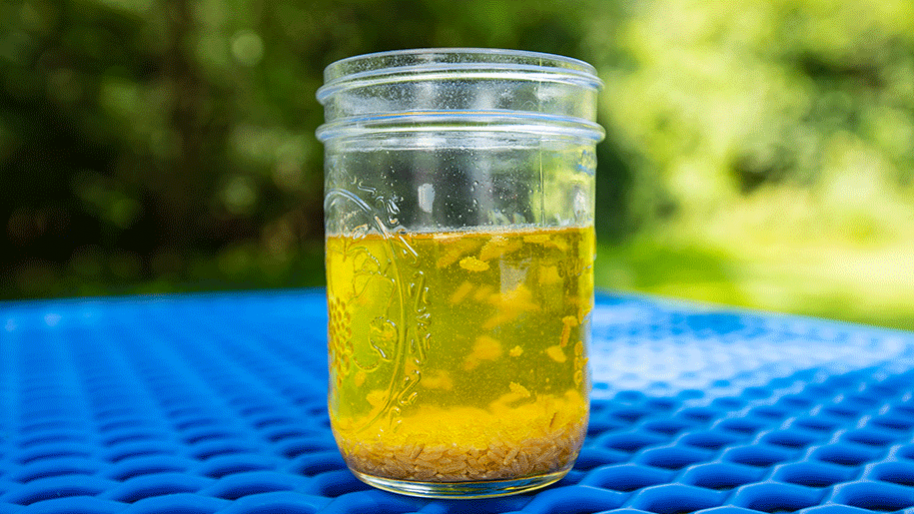
This fun and intriguing experiment demonstrates gas behaviors. To get their rice grains dancing, they’ll need to add vinegar to a mix of water, baking soda, and rice. What a nifty way to discover more about states of matter and gas production!
Learn More: Mott Children
55. Egg Drop Challenge

This isn’t just a fun science project- it’s a crash course in physics! Your students will need to construct a protective device to prevent an egg from cracking when dropped from a height. To do so they’ll need to think critically about concepts like gravity and force.
Learn More: Sciencing
56. Making a Sundial
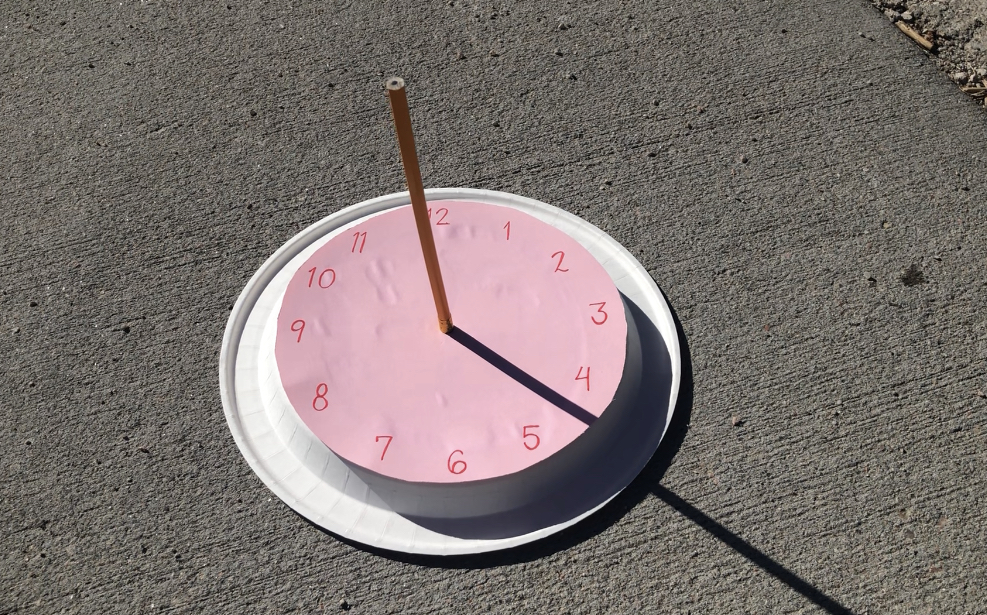
Step back in time as your students take a crack at this project! As they craft a sundial, one of the earliest tools for telling time, they’ll learn about Earth’s rotation and how it affects our understanding of time.
Learn More: KDVR
57. Crystal Growing Experiment
What’s more fascinating than watching crystals grow? Your students are sure to love taking this project on! If they do, they’ll transform into little geologists and learn more about how geological processes result in amazing structures.
58. Homemade Rain Gauge

Who knew you could measure rainfall with a DIY tool? Students can build their own rain gauge and gain insights into the water cycle, precipitation, and the significance of data accuracy in science.
Learn More: Spectrum News
59. Sound Wave Experiment
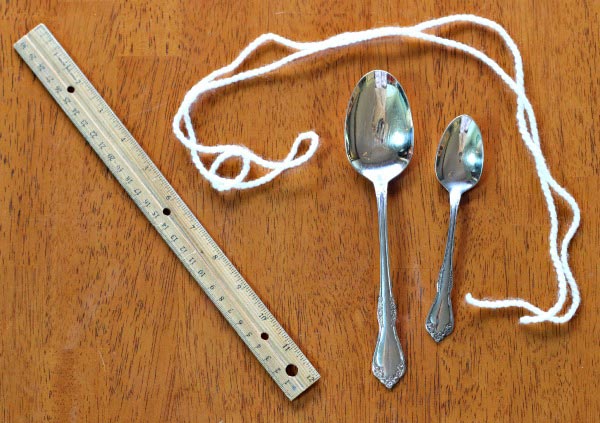
Have your students explore the fascinating world of sound waves using just a spoon and a string. In conducting this experiment, they’ll dive into learning about how vibrations create sound and how sound travels differently through various mediums.
Learn More: KC Edventures
60. Invisible Extinguisher
Fire and oxygen – a relationship your students will explore by putting a candle out without blowing on it. As they pose various hypotheses, they’ll discover the role oxygen plays in combustion and observe what happens when fire is deprived of it.
61. Growing Mold Experiment
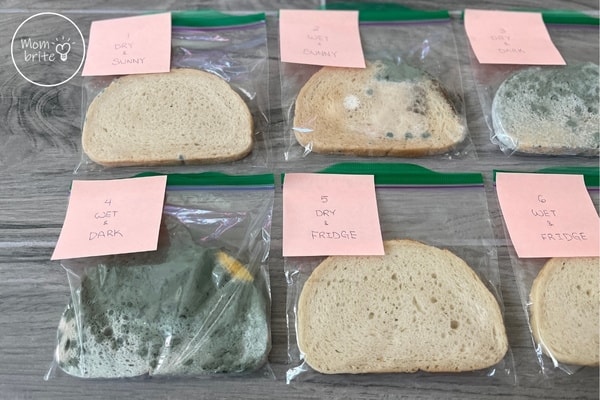
A slightly ‘yucky’, but fascinating experiment is to get your students to grow mold on different food items! This will provide them with insights into decomposition, microbial growth, and the importance of proper food storage.
62. Salt Water Desalination
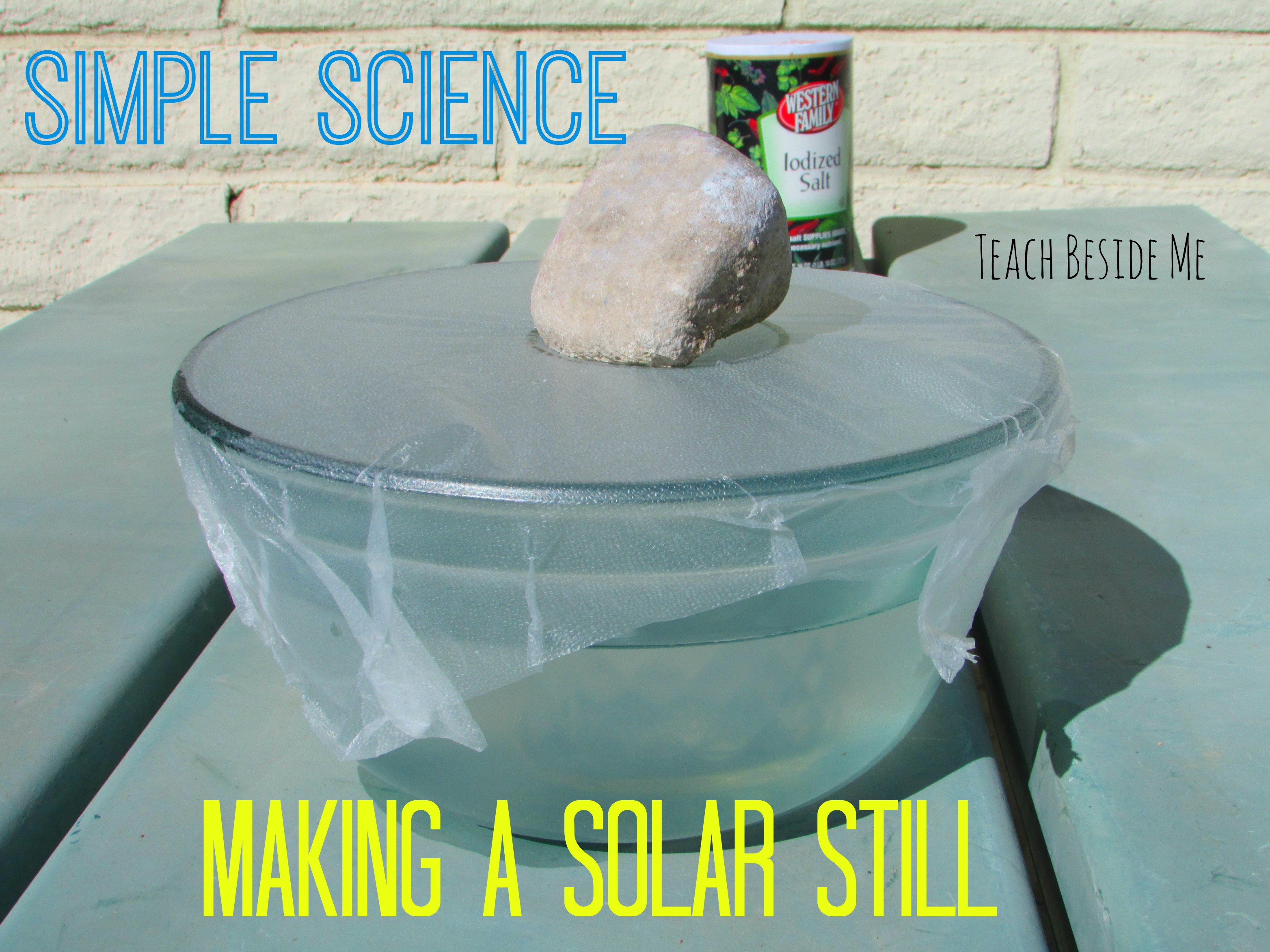
This experiment prompts your pupils to consider how they could solve the world’s water crisis. As they take on a desalination experiment, they’ll develop an understanding of the processes of evaporation, condensation, and the water cycle.
Learn More: Teach Beside Me
63. DIY Barometer

Bring the weather station into your classroom with a DIY barometer! This science project will help students understand atmospheric pressure and how it’s used for weather predictions. All they’ll need to get started is a glass jar, rubber band, doctor’s glove, tape, markers, paper, and a straw.
Learn More: Housing A Forest
64. DIY Wind Vane

Learning about wind direction becomes an art project when your students create their own! This fun project combines weather patterns, creativity, and problem-solving.
Learn More: Generation Genius
65. Paper Chromatography
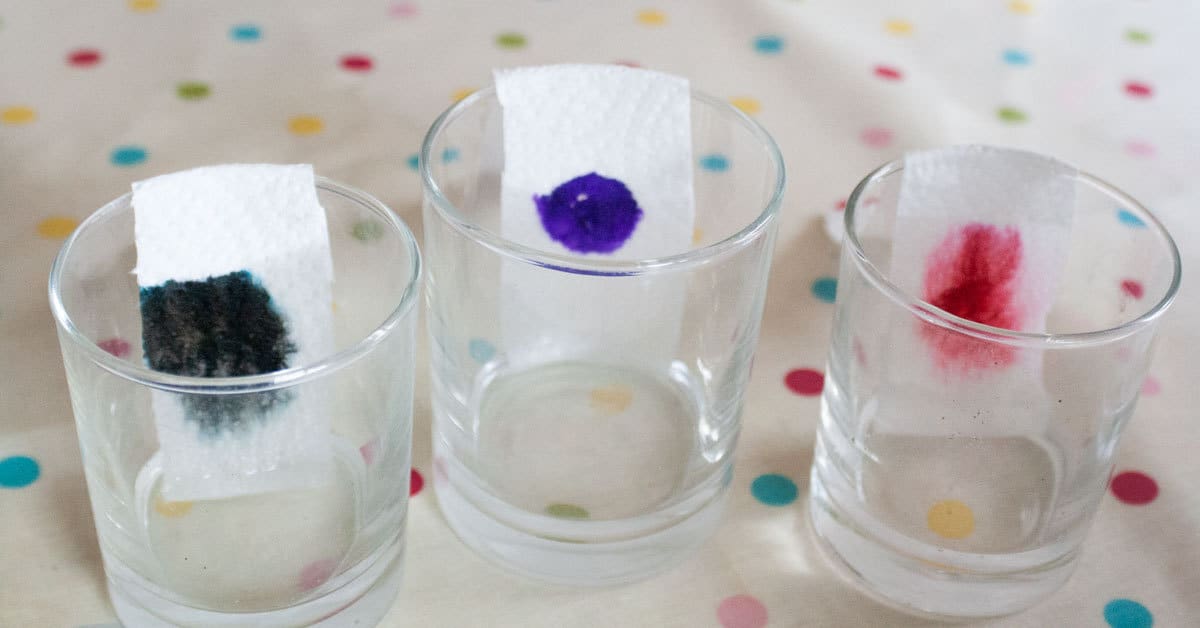
Using paper chromatography, your students will break down black ink into its component colors. This project allows them to develop an understanding of solubility and intermolecular forces.
Learn More: Rainy Day Mum
Science and STEM learning is best when it’s hands-on, and each of these experiments is a great example of this. Don’t forget to encourage your students to complete a write-up activity before and after each one to really push their scientific understanding.
Frequently Asked Questions
What is a good science project for a 5th grader.
A good science project should introduce students to new concepts, but with hands-on and exciting experiments. Take a look at the list above for the most exciting.
What are some easy experiments?
Each of the experiments that we have listed above requires very little setup and is easy to do in the classroom or at home. Plus, they all have proven results that will get your students interested in learning science, too!
- Skip to primary navigation
- Skip to main content
- Skip to footer
Science Struck
Amazing 5th Grade Science Fair Projects That are Kid-friendly
5th graders are inquisitive, curious, and willing to experiment with what fascinates them. Science projects give students a chance to understand complex, scientific phenomena through simple experiments. Encourage this need to learn, discover and prod, by introducing them to these fascinating ideas for 5th grade science fair projects.
Like it? Share it!

Science fairs are a gateway to an opportunity where students can display their work proudly, by using various materials that mind-boggle those who chance upon each stall. It’s not only a valuable learning experience, it’s a chance to sharpen their communication skills at a young age; they will be nervous at first while speaking, but it will slowly come naturally once they get into the flow of explaining what their project is about.
5th graders are abuzz with energy and are open to all sorts of things, where science becomes an instant favorite as a subject, as they grow. Devising project ideas for fifth graders shouldn’t be very difficult, since children of this age are eager to experiment.
Kids have questions about the world and are interested to know about why things happen the way they do. They are so enthusiastic, that they’ll do anything to satisfy their hunger for knowledge. They’ll dirty themselves in muck to collect earthworms, enter turbid waters to closely inspect ‘aquatic’ life, or climb tall trees to examine a bird’s nest. Their craving for learning is insatiable where it’s best to channelize this curiosity in the right direction, by encouraging them to participate in science fairs, exhibitions, and project competitions. These 5th grade science fair projects, will teach them how the things around us aren’t as ordinary as they seem.
5th Grade Science Fair Project Ideas
Magical frost.

Things Required
- A cup and a ½ of Epsom salts
- 2 cups of water
- A glass saucepan
- 2½ tablespoons of powdered laundry detergent
- A paint brush
- A medium-sized sheet of ordinary glass
- 2 oz. of dextrin (a.k.a, baked corn starch – optional)
Procedure Step 1 : Place the glass saucepan over a medium flame on the stove, and pour into this the two cups of water.
Step 2 : Wait for the water to start bubbling before adding the Epsom salts. Stir thoroughly for about 30 seconds until some of the salts dissolve, leaving the rest settled at the bottom of the saucepan.
Step 3 : Take the saucepan off the heat and stir into this, the powdered laundry detergent and dextrin.
Step 4 : Wait for the water to cool down, before using the paint brush to slather the mixture across the glass sheet; leave it aside to dry. If this is too messy, a good alternative would be to pour the mixture in a shallow tub before submerging the glass sheet into it. Leave the tub in a sunlit area for the glass sheet to dry faster, while the excess water evaporates. The result will be a frosted glass with vivid detailing.
What Kids Will Learn
Kids will learn how Epsom salts upon drying, will crystallize to form frost-like deposits across the glass, as it coalesces with the other ingredients to form a stiff bonding. The glass can be used as a decorative piece in the classroom, or at home where it can be on display for all to see post the science fair.
Jack and the Beanstalk

- A handful of beans
- Watering can
- Rubber gloves
- Paper and colored pencils
Procedure Step 1 : Choose any kind of beans that you’d like to plant (mung beans, for example), and let kids place these in individual pots. Teach them the importance of using gloves while potting and handling plants, to avoid contaminating their hands.
Step 2 : Using an index finger, create little holes in the mud, spacing them apart so that the beans have enough room to grow.
Step 3 : Once the beans are tucked into their little mud pockets, cover them up by sliding mud across these openings.
Step 4 : Pat the soil gently for a few seconds (to even it out), and then pour a little water into the pot from the watering can. Leave it on a windowsill that receives plenty of sunlight, and have kids water it twice daily during school hours. Have them record their observations by drawing it on paper, and marking each day’s date as well.
Kids will learn about how plants grow, and what it takes to nurture them into full-grown spectacles. It will ‘sow’ in their hearts the desire to plant something on their own at home, where parents can play a major role in encouraging this particular interest. Beans aren’t the only things that can be experimented with. Try fast-blooming plant varieties like marigolds and cosmos.
Magnified Beauty

- A bunch of colorful leaves
- Large magnifying glass
Procedure Step 1 : Tear a leaf into half (or scrape the top of it), and stain the exposed edge with a single drop of red dye.
Step 2 : Sandwich the leaf between two microscope slides, and have students record their observations under the microscope.
Step 3 : They will notice how intricate the inside of a leaf is, as the red dye highlights the transparent bits. It is truly a sight to behold for a 5th grader.
Step 4 : After this experiment, take students out into an area where there is an abundance of plant life, and using magnifying glasses, have them record their observations by analyzing flowers, leaves, or even insects.
Kids will learn about the marvels of nature and how plants look ordinary to the naked eye, but are in fact a whole different story when closely examined. Help them identify the plants that they chance upon, using a reference book that enlists all kinds of flowers and non-flowering plants. The microscope experiment can be used to examine not just leaves, but petals as well.
Handmade Sundial

- 1 sturdy stick
- A handful of pebbles
Procedure Step 1 : Find a sunny spot to carry out the experiment, whether it’s at the beach, a backyard, or school playground. Bury the stick in the mud / sand and have kids take notice of the shadow it casts.
Step 2 : Explain to them how the shadow will start to shift, depending on the movement of the sun’s rays, much like that of an old-fashioned sundial. Showing them what a sundial looks like beforehand, will make them understand the experiment better.
Step 3 : Track the shadow’s movement by keeping a clock on hand, marking the time in a notebook before placing a pebble where the shadow of the stick falls.
Step 4 : Tell kids to check on the dial every 3 hours, marking the time in their notebooks along with a diagram of the sundial. They must also place a row of pebbles along the length of the stick’s shadow, and draw the number (that signifies the time) in the mud / sand using a pencil. They must be whole numbers, so that they can create a sundial that has a complete rotation of 9 – 12 – 3 – 6 – 9.
Kids will learn a fun way of telling the time, and can create their own kind of sundial at home using creative materials. Parents / teachers can help them put a sundial together for the science fair project, using things like cardboard, paint, stickers, glitter, and other imaginative add-ons.
Color-Changing Marvel
- Celery stalk (or any light-colored flower on its stem)
- Food coloring (any one color)
- Tall glass of water
Procedure Step 1 : In a glass of water, add 3 tablespoons of desired food coloring, briefly stirring the solution so that the water is a solid color.
Step 2 : Place the celery stalk (snip the bulbous end off) or flower in an upright position in the glass of colored water.
Step 3 : The following day, students will be in awe to witness the celery stalk / flower carrying coloration changes, that it absorbs from the colored water.
Kids will learn about how plants sustain themselves, using their roots or exposed ends (like the celery stalk) to suck in water. This experiment doesn’t have to be restricted to a glass of water. To change the colors of white flowers, a potted plant can be watered with colored water instead of regular water. Let students experiment with an entire pot of white lilies or roses, to give them a beautiful blush once water is absorbed.
Other Science Fair Projects to Try
#Demonstrating the laws of motion # Showing experiments on the uses of solar energy # Making a volcano model # Demonstrating the anomalous expansion of water # Conducting litmus tests to identify acids from bases # Distinguishing a boiled egg from a raw one # Experimenting with how music helps plants grow # Testing the effects of salt on the freezing point of water # Demonstrating how the color of an object determines its size, according to visual perception # Testing the effect of temperature on a magnet’s properties # Making miniature models of simple machines # Comparing people’s pulse rate from different age groups (using a stethoscope) # Doing a comparative study of the time taken by different people, to respond to the same stimuli
These ideas for 5th grade science fair projects are a fun mix of different experiments, that kids can try out at home before putting it up on display. Once they get the hang of doing the experiments on their own, have them come up with others that they’d like to try, by performing the experiments in the class laboratory first.
Science projects provide students with the means to apply scientific concepts to a practical situation, experimenting with what they read in books. Projects serve as an excellent learning experience for students, as they can put into practice all the interesting scientific theories they are taught in class. Help students conduct thorough research on the subject of their project. Guide them in the analysis of experimental data and in deriving conclusions. Warn them of the safety precautions they need to take, so as to avoid any mishaps. Most importantly, give these inquisitive young minds the freedom to experiment. You never know, these kids could be ‘scientists-in-the-making’.

Get Updates Right to Your Inbox
Privacy overview.

Do a Science Fair Project!
How do you do a science fair project.

Ask a parent, teacher, or other adult to help you research the topic and find out how to do a science fair project about it.
Test, answer, or show?
Your science fair project may do one of three things:
Test an idea (or hypothesis.)
Answer a question.
Show how nature works.
Topic ideas:
Space topics:.
How do the constellations change in the night sky over different periods of time?
How does the number of stars visible in the sky change from place to place because of light pollution?
Learn about and demonstrate the ancient method of parallax to measure the distance to an object, such as stars and planets.
Study different types of stars and explain different ways they end their life cycles.
Earth topics:
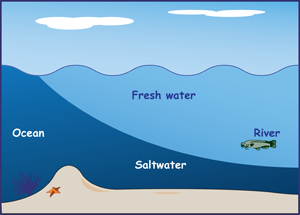
How do the phases of the Moon correspond to the changing tides?
Demonstrate what causes the phases of the Moon?
How does the tilt of Earth’s axis create seasons throughout the year?
How do weather conditions (temperature, humidity) affect how fast a puddle evaporates?
How salty is the ocean?
Solar system topics:

How does the size of a meteorite relate to the size of the crater it makes when it hits Earth?
How does the phase of the Moon affect the number of stars visible in the sky?
Show how a planet’s distance from the Sun affects its temperature.
Sun topics:
Observe and record changes in the number and placement of sun spots over several days. DO NOT look directly at the Sun!
Make a sundial and explain how it works.
Show why the Moon and the Sun appear to be the same size in the sky.
How effective are automobile sunshades?
Study and explain the life space of the sun relative to other stars.

Pick a topic.
Try to find out what people already know about it.
State a hypothesis related to the topic. That is, make a cause-and-effect-statement that you can test using the scientific method .
Explain something.
Make a plan to observe something.
Design and carry out your research, keeping careful records of everything you do or see.
Create an exhibit or display to show and explain to others what you hoped to test (if you had a hypothesis) or what question you wanted to answer, what you did, what your data showed, and your conclusions.
Write a short report that also states the same things as the exhibit or display, and also gives the sources of your initial background research.
Practice describing your project and results, so you will be ready for visitors to your exhibit at the science fair.
Follow these steps to a successful science fair entry!
If you liked this, you may like:
The Edvocate
- Lynch Educational Consulting
- Dr. Lynch’s Personal Website
- Write For Us
- The Tech Edvocate Product Guide
- The Edvocate Podcast
- Terms and Conditions
- Privacy Policy
- Assistive Technology
- Best PreK-12 Schools in America
- Child Development
- Classroom Management
- Early Childhood
- EdTech & Innovation
- Education Leadership
- First Year Teachers
- Gifted and Talented Education
- Special Education
- Parental Involvement
- Policy & Reform
- Best Colleges and Universities
- Best College and University Programs
- HBCU’s
- Higher Education EdTech
- Higher Education
- International Education
- The Awards Process
- Finalists and Winners of The 2022 Tech Edvocate Awards
- Finalists and Winners of The 2021 Tech Edvocate Awards
- Finalists and Winners of The 2020 Tech Edvocate Awards
- Finalists and Winners of The 2019 Tech Edvocate Awards
- Finalists and Winners of The 2018 Tech Edvocate Awards
- Finalists and Winners of The 2017 Tech Edvocate Awards
- Award Seals
- GPA Calculator for College
- GPA Calculator for High School
- Cumulative GPA Calculator
- Grade Calculator
- Weighted Grade Calculator
- Final Grade Calculator
- The Tech Edvocate
- AI Powered Personal Tutor
College Minor: Everything You Need to Know
14 fascinating teacher interview questions for principals, tips for success if you have a master’s degree and can’t find a job, 14 ways young teachers can get that professional look, which teacher supplies are worth the splurge, 8 business books every teacher should read, conditional admission: everything you need to know, college majors: everything you need to know, 7 things principals can do to make a teacher observation valuable, 3 easy teacher outfits to tackle parent-teacher conferences, 26 of the best 5th grade science projects and experiments.

Are you looking for science activities to do with your 5th graders? No sweat. We have you covered. Check out our list of 26 science projects and experiments that you can try with your 5th graders this month.
- Hand-Eye Coordination and Age | All-Science-Fair-Projects.com – Grades 2-5, Use a stopwatch and ping-pong ball to find out how hand-eye coordination changes as children get older.
- What Do Yeast Eat…and How Can You Tell? | Education.com – Grades 2-5, The objective of this project is to examine which foods yeast cells eat.
- How Do Antacids Work? | Biochemistry Discovery Lab – Grades 3-6, Simulate out how antacids work to treat heartburn by using fake stomach enzymes.
- Mice & Music | Hubpages.com – Grades 3-6, Find out if music affects the performance of mice in a maze.
- A Magnetic Primer Designer | Sciencebuddies.org – Grades 3-6 Biology project that utilizes magnets to mimic the process that scientists use to replicate DNA, using the polymerase chain reaction.
- Growing Bacteria in Petri Dishes | Stevespanglerscience.com – Grades 3-6 biology In this science fair project, you must find samples of bacteria from an assortment of surfaces to find the surfaces that are the dirtiest.
- Effects of Ozone on Plants and Health | Julian’s Science Fair – Grades 4-6, Environmental conditions can dramatically impact plant growth and germination. Does increased ozone stunt germination and plant growth? Grow some plants and find out.
- Making Batteries from Fruits and Vegetables | Sciencebuddies.org – Grades 4-7, Use veggie power to build a simple battery from a variety of vegetables. Which ones are the most powerful?
- How Water Beats Rock | Education.com – Grades 1-5, Discover how water is more potent than rocks. Experiment with ways that water can break the stone.
- Soil Type and Liquefaction | All-Science-Fair-Projects.com – Grades 1-5, Experiment with sand, clay, and loam and find out which type of soil dissolves most easily.
- Effects of Temperature and Humidity on Static Charges | Education.com – Grades 1-5, Use balloons, a rubber ball, and a scarf to investigate why those socks stick together when you take them out of the dryer and how conditions in the air affect static electricity.
- Dig This: Biodegradation | Education.com – Grades 2-6, How do organic materials become soil? This science experiment measures which materials biodegrade.
- Geology 101 | Education.com – Grades 2-6, Water carries lots of soil and minerals in a creek. In this project, you’ll examine the behavior of water and gravel in creek beds and the formation of sedimentary rocks.
- Geothermal Power Plant Model | Energyquest.ca.gov – Grades 3-6, Use a pinwheel and a can of boiling water to simulate geothermal power production. Determine how to generate the most energy from your “power plant.”
- Egg Substitutes | Sciencebuddies.org – Grades 3-6, Many people avoid eggs because of allergies or diet preferences. But eggs play a vital chemical function in baking and cooking. Evaluate the ability of egg substitutes to mimic their binding, leavening, or thickening properties.
- How Much Water is Required to Cook Pasta? | Sciencebuddies.org – Grades 3-6, We’re used to cooking our pasta in a big pot of boiling water. Do you actually need that much water, time, and energy to cook pasta? Perform some experiments to find out.
- Building the Best Bridge | Education.com – Grades 3-6, This project helps students develop an understanding of architecture and engineering through experimentation of which shapes are the most structurally strong.
- Rubber Bands for Energy | Sciencebuddies.org – Grades 3-6, Put the energy of rubber bands to work and learn about the relationship between potential and kinetic energy.
- Properties of Pendulums | Illinois Institute of Technology – Grades 3-6, Pendulums have been used for timekeeping for hundreds of years. Find out how changes in mass and length affect the oscillation of a pendulum.
- Bust That Rust! | Education.com – Grades 3-10, Investigate the chemistry of rust and the oxidation process. Younger students will use steel wool, water, salt, and vinegar. Older students will explore the chemistry of rust.
- Wind Around the Home | Education.com – Grades 4-6, Learn about wind speed and duration and different locations around your home. Determine the best site(s) for a windmill.
- Arch Magic: The Unbreakable Egg | Education.com – Grades 4-7, Tell you, folks, tonight is a good night for an egg dinner. Use the eggshells to explore how arches distribute weight. Demonstrates the power of arches by asking students to pile telephone books on top of eggs without damaging them.
- How a Comet’s Size Affects How Fast It Melts | Sciencebuddies.org – Grades 4-7, Comets are often compared to giant, dirty snowballs, and the comet tail you see in the sky is evidence of melting. In this project, you’ll use figure out how the size of a comet affects its melting rate.
- Make an Electromagnet | Energyquest.ca.gov -Grades 4-7, Learn how to create an electromagnet from batteries, wire, and a knife switch. How does changing to kind of batteries used affect the power of your
- Bombs Away! A Ping Pong Catapult | Science Buddies.org – Grades 4-7, They fly through the air with the greatest of ease. Find ways to put a ping pong ball accurately on target time after time.
- The Mechanics of Carnival Games | Sciencebuddies.org – Grades 5-8, Find out why those carnival games are so hard. Learn the fundamental laws of science that help the concessionaires engineer the games in their favor.
Improving Deaf Children’s Education
Ph.d. vs. ed.d., which one is right ....
Matthew Lynch
Related articles more from author.

High School Science Apps, Tools, and Resources That We Love

Let Us Help You Promote Your Education Related Product!

STEM Education is About Hands on Experiences
Ecology and environmental science apps, tools, and resources for that we love, middle school biology apps, tools, and resources that we love, high school biology apps, tools, and resources that we love.
Science Fair Project Ideas
- Ph.D., Biomedical Sciences, University of Tennessee at Knoxville
- B.A., Physics and Mathematics, Hastings College
Science fair is an opportunity for students of all ages to ask big questions, conduct meaningful research, and make exciting discoveries. Browse hundreds of science fair project ideas to find the ideal project according to grade level.
Preschool Science Project Ideas
Preschool is not too early to introduce children to science! Most preschool science ideas aim to interest kids in exploring and asking questions about the world around them.
- Play with silly putty and examine its properties.
- Look at flowers. How many petals does each flower have? What parts do flowers share in common?
- Blow up balloons. What happens when you release an open balloon? What happens when you rub a balloon on your hair?
- Explore color with fingerpaints.
- Blow bubbles and look at how bubbles interact with each other.
- Make a telephone with cups or cans and some string.
- Have preschoolers categorize objects into groups. Discuss similarities and differences between objects.
Grade School Science Project Ideas
Students are introduced to the scientific method in grade school and learn how to propose a hypothesis . Grade school science projects tend to be quick to complete and should be fun for the student and the teacher or parent. Examples of suitable project ideas include:
- Determine whether insects are attracted to lights at night because of their heat or their light.
- Does the type of liquid (e.g., water, milk, cola) affect seed germination?
- Does the power setting of the microwave affect how many unpopped kernels are in popcorn?
- What happens if you pour a liquid other than water through a pitcher-type water filter?
- What type of bubble gum produces the biggest bubbles?
Middle School Science Fair Ideas
Middle school is where kids can truly shine at the science fair! Kids should try to come up with their own project ideas, based on topics that interest them. Parents and teachers may still need to help with posters and presentations, but middle school students should have control of the project. Examples of middle school science fair ideas include:
- Examine food labels. How does the nutritional data for different brands of the same food (e.g., microwave popcorn) compare?
- Is laundry detergent effective if you use less than the recommended amount?
- How permanent are permanent markers? Are there chemicals that will remove the ink?
- Can a saturated solution of salt still dissolve sugar?
- Do green bags really preserve food longer?
- Are goldfish water chemicals really necessary?
- What shape of ice cube melts the slowest?
High School Science Fair Ideas
High school science fair projects can be about more than a grade . Winning a high school science fair can net some nice cash prizes, scholarships, and college/career opportunities. While it's fine for an elementary or middle school project to take hours or a weekend to complete, most high school projects run longer. High school projects typically identify and solve problems, offer new models, or describe inventions. Here are some sample project ideas:
- Which natural mosquito repellents are most effective?
- Which home hair color holds its color through the most washings?
- Do people who play car racing video games have more speeding tickets?
- Which high school sport is associated with the most injuries?
- What percentage of left-handed people use a computer mouse with their left hand?
- What season is worst for allergies and why?
College Science Fair Ideas
Just as a good high school idea can pave the way for cash and college education, a good college project can open the door to graduate school and gainful employment. A college project is a professional-level project that shows you understand how to apply the scientific method to model a phenomenon or answer a significant question. The big focus on these projects is on originality, so while you might build on a project idea, don't just use one someone else has already done. It's fine to use an old project and come up with a new approach or different way of asking the question. Here are some starting points for your research:
- What plants can detoxify gray water flowing from a home?
- How could the timing of a traffic light be changed to improve intersection safety.
- Which home appliances use the most power? How could that energy be conserved?
This content is provided in partnership with National 4-H Council. 4-H science programs provide youth the opportunity to learn about STEM through fun, hands-on activities and projects. Learn more by visiting their website.
- Chemistry Science Fair Project Ideas
- Elementary School Science Fair Projects
- 11th Grade Science Fair Projects
- Middle School Science Fair Project Ideas
- High School Science Fair Projects
- 5 Types of Science Fair Projects
- 6th Grade Science Fair Projects
- 3rd Grade Science Fair Projects
- 7th Grade Science Fair Projects
- Biology Science Fair Project Ideas
- Kindergarten Science Projects
- Science Fair Project Help
- Grade School Science Fair Project Ideas
- How to Select a Science Fair Project Topic
- Science Fair Project Ideas for 12th Graders
Science Project Ideas
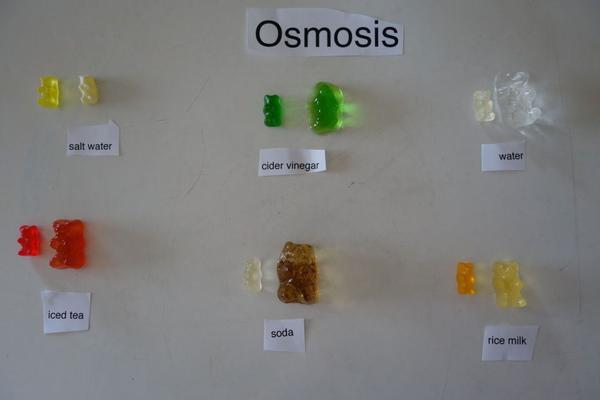
Gummy Bear Experiment
The gummy bear experiment is a fun activity that teaches the basic concept of osmosis to the little ones in an easy manner. They will also be thrilled at the idea that their favorite gummy bears could teach them a lesson or two in science.
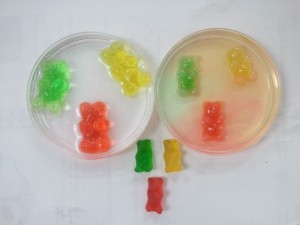
Gummy Bear Science Project Instructions
Hypothesis for growing/shrinking gummy bears.
When a gummy bear is placed in a hypotonic solution (e.g. water) then it will increase in mass and volume. On the other hand, its mass and volume decrease when placed in a hypertonic solution (e.g. salt water). Hypertonic refers to a higher concentration of solutes and hypotonic is just the reverse.
Things Needed
- Physical balance or digital weighing machine
- Sieve, plastic fork or screen
- Graph paper
- Measure the dimensions (length, breadth and height) of the bear with a scale. Measure its mass with the balance.
- Fill the bowl with water.
- Completely immerse the gummy bear in the water.
- Let the bowl sit overnight in a place away from direct sunlight.
- Next day, lift the bear from the water with a plastic fork, sieve or screen.
- Record the dimensions and mass of the bear again.
- Do the same observation each day for a couple of days more.
- Plot a graph with the time in hours along the X-axis (the dependent variable) and the mass or weight of the gummy bear along the Y-axis (independent variable). Check the nature of the graph.
Things You Can Try
- Set up a series of bowls on the table and fill them with different solutions like that of baking soda, vinegar, salt, distilled water, etc. Make similar observations as above for each one of them. Compare your results.
- Also, check if the taste and/or color of the bears have changed.
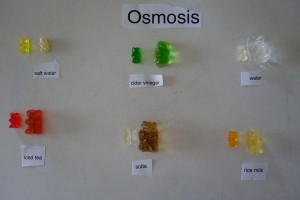
Gummy Bear Osmosis Video
How does it work.
The ingredients of gummy bears are sugar, water, and gelatin, with little water content. Due to the process of osmosis, i.e., the movement of water molecules through a selectively permeable membrane from an area of high concentration to that of a lower concentration, the bear starts to grow. However, it doesn’t get dissolved as the gelatin is insoluble in water.
On trying out the different ideas, you will find that the degree of expansion of the candy depends on the liquid on which it is kept. However, vinegar, which is actually an acid, can dissolve the candy .
This simple trick can prove to be a cool science fair idea. The kids will be enthralled to display their knowledge to the audience in a fun way.
References:
https://biozone.weebly.com/uploads/2/7/4/2/274298/gummy_bear_osmosis.pdf
https://tinkerlab.com/incredible-growing-gummy-bears/
https://www.childrensmuseum.org/blog/saturday-science-growing-gummy-bears
https://www.homeschool.com/blog/index.php/2014/04/homeschool-science-gummy-bear-osmosis/
Leave a Reply Cancel reply
Your email address will not be published. Required fields are marked *
Save my name, email, and website in this browser for the next time I comment.

Science Fair Projects
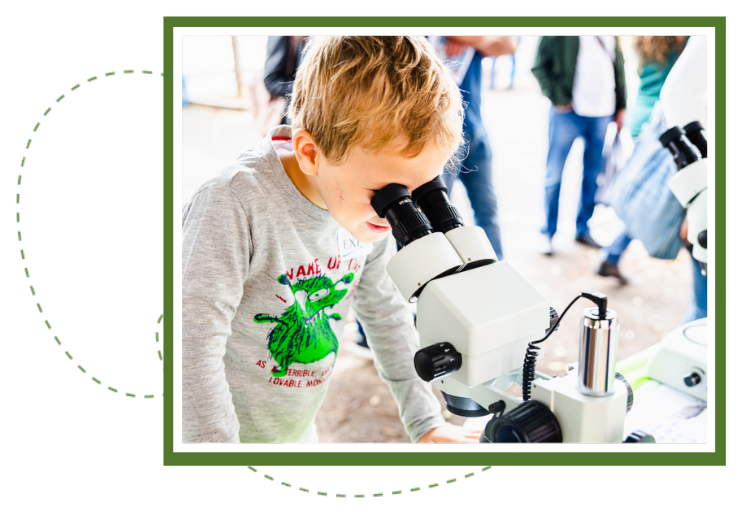
What Makes Popcorn Pop?
People have been fascinated by popcorn for centuries. Native Americans believed that a spirit lived inside each kernel of popcorn. When heated, the spirit grew angry and would eventually burst out of its home and into the air as a disgruntled puff of steam. A less charming but more scientific explanation exists for why popcorn pops.
Popcorn is scientifically known as Zea mays everta. It’s a type of maize, or corn, and is a member of the grass family. Popcorn is a whole grain and is made up of three components: the germ, endosperm, and pericarp (or hull) . Of the 4 most common types of corn —sweet, dent (also known as field), flint (also known as Indian corn), and popcorn—only popcorn pops! Popcorn differs from other types of corn in that its hull has just the right thickness to allow it to burst open.

As the kernel heats up, the water begins to expand. Around 212 degrees the water turns into steam and changes the starch inside each kernel into a superhot gelatinous goop. The kernel continues to heat to about 347 degrees. The pressure inside the grain will reach 135 pounds per square inch before finally bursting the hull open.
As it explodes, steam inside the kernel is released. The soft starch inside the popcorn becomes inflated and spills out, cooling immediately and forming into the odd shape we know and love. A kernel will swell 40-50 times its original size!
Where to Begin an Experiment?
There are a lot of experiments you can try using popcorn. First, you need to figure out what you want to compare and what you can measure. For example:
- White vs. yellow
- Flavor vs. plain
- Methods of popping: microwave, stovetop, or air popper
- Size/amount of kernels
- Storage temperature for kernels
- Storage conditions (moisture, dryness) for kernels
- Popping time
- Total number of kernels popped or unpopped
- Percentage of popped kernels
- Volume of popcorn produced
- Weight of popcorn produced
- Average size of popped corn
- Time it takes to pop popcorn
For example:
- How does moisture affect popability?
- Which brand of microwave popcorn pops fastest?
- Which brand leaves the most unpopped kernels?
Avoid questions like “Which brand tastes best?” because it is a subjective question and difficult to measure.
Make sure you replicate your experiment. It’s important to repeat your test at least three times. That means, if you’re comparing microwave popcorn for the number of unpopped kernels left after popping, you need to test 3 of the same type of bag per brand. Sure, that’s a lot of popcorn, but that just means you get to eat a lot of popcorn. Be smart: plan ahead and conduct your experiment over several nights.
Which Brand of Microwave Popcorn Pops Fastest?
If we had a dollar for every time we have been asked this question, we would be very, very wealthy. And if we had a dollar for every time we’ve answered it, we would be very, very poor.
First, we don’t mention or talk about brands. You might have a favorite popcorn brand, but we don’t. We love ALL American processed popcorn! But we appreciate that you’re doing a science fair project and you want a quick answer, which brings us to our second point: It’s your science fair project; you have to do your own experimenting and see what happens. The bad news is there’s no quick answer. The good news is that you get to eat lots of popcorn along the way.
General Measuring Rules
- 2 tablespoons of unpopped popcorn kernels will make about a quart popped
- 2 tablespoons = 1/8 cup = 1 ounce
- 8 ounces in a cup
- 4 ounces in ½ cup
- 4 cups in a quart
- 4 tablespoons = 1/4 cup which would yield about 2 quarts popped
Sample Experiments
The following are just a few of the experiments you can do using popcorn.
- Grow, Grow, Grow Your Popcorn | Grades K-3
- How Much Water Does Popcorn Contain? | Grades 5-6
- Comparing Brands | Grades 5-8
- Comparing Volumes | Grades 5-8
- The Effect of Moisture on Popcorn | Grades 5-8
- Temperature Comparison Test | Grades 5-8
- Popcorn Color Comparison | Grades 5-8
You are now leaving the popcorn.org site and the Popcorn Board is not responsible for the information or views expressed on external sites.

Students flex their brainpower at P.E.I. Science Fair
Students from 21 schools presented projects for a chance to represent the island at national fair.

Social Sharing
From summer fashion science and mousetrap-powered cars, to computers that use water to make calculations, P.E.I. school students showed off their scientific prowess this week.
The P.E.I. Science Fair , held Tuesday at the Eastlink Centre in Charlottetown, featured more than 180 students from grades 4 to 10, showcasing 129 science projects.
On the line was more than $15,000 in prizes, and a trip to the Canada-Wide Science Fair in Ottawa later this year.
Projects this year included students' innovations in renewable energy, biodegradable materials, climate adaptation, agriculture, robotics, and health and well-being.

One of this year's participants was Theo Hansen, a Grade 8 student at Morell Consolidated School.
He turned his passion for computing into his science project, Follow the Flow: Computing with Water , telling CBC News his invention was a visual representation of how computers make calculations — using water and 3D-printed components.
"I was able to use water to add numbers," he explained. "I had syringes which I would fill up with a specific amount of water, and I would squirt them down.
"The way that they flowed through the system and the 3D-printed parts, it would output as a number."

P.E.I.'s school science fair program is offered at both the local school and provincial levels.
It is a community education partnership, involving hundreds of volunteers and 40 organizations.
This year's provincial fair in Charlottetown saw student participants demonstrate their research to roughly 80 volunteer judges, fellow students, and the general public.
'Nation's brightest young minds'
Four students from grades 7-12 were selected to attend the national fair in May, which offers a platform to boost young people's interest in science, technology, engineering and mathematics (STEM.)
That national event will see more than $1 million in prizes and scholarships awarded to winners who the event's website describes as "our nation's brightest young minds, celebrating their passion for STEM and innovation."
This year's four delegates to the national fair are:
- Charlotte Campbell and Leila Djelouah (Grade 8, East Wiltshire Intermediate School): The Root of the Problem
- Kayley Carter (Grade 9, Belfast Consolidated School): How many apples is safe to give a horse?
- Hargun Cheema (Grade 10, Three Oaks Senior High School in Summerside): Soft Landing on Mars

L.M. Montgomery Elementary School student Jack Shaw, of Charlottetown, won a top prize in Grade 6 for his project, How Far Will a Mousetrap Car Go?
He fastened Lego wheels to wood mousetraps, and then measured how far the mousetraps would propel the cars, experimenting with different lever lengths to see which offered the most propulsion.
The results of the experiment proved to be another valuable educational lesson for Shaw: admitting when you're wrong.
"My hypothesis was wrong," he said. "I thought the 12-inch lever arm, which is the longest, would go the farthest, but the six-inch went the farthest.
"I would say that's because of the weight on the front; It would weigh down the front and give it some slippage on the back."

Grade 7 Summerside Intermediate School student Sylvie Noall had a practical question that P.E.I. residents could benefit from as hotter weather approaches: what colour of clothing is the best to wear when it's hot outside?
"I've always been a bit of a fashionista," she told CBC News. "Being comfortable and being cooler in the summers, it's going to be good."
Her experiment involved using a night light and placing different coloured shirts under the light's heat.
"The colours grey and white are the best colours to wear under the sun when it's warm out," she concluded. "However, black and navy blue are not the best."
- Multiple science fair wins help earn P.E.I. student $20K scholarship
- P.E.I. teen turns science project on bats into small business
Winners and prizes
Here are some of this year's P.E.I. Science Fair winners, not including specialty prize winners, who will be announced online next week.
Lieutenant Governor's Award
- Leila Djelouah and Charlotte Campbell (Grade 8, East Wiltshire Intermediate School): The Root of the Problem
Junior — Honourable mention
- Porter Ludgate (Grade 8, Morell Consolidated School): Knuckleball
- Brianna Bridges and Marley Mintie (Grade 7, Summerside Intermediate School): Restez brillent avec la vitamin C
- Kinley Sharkey (Grade 7, Summerside Intermediate School): Cookie Chemistry
- Greta Edgett-Gallant (Grade 8, Stonepark Intermediate School): From Pockets to Petri Dish: Bacterial Growth on Smart Phones
- Samuel Puiia-MacDonald (Grade 8, East Wiltshire Intermediate School): Is Heavy Metal Healthy
- Keegan Casey (Grade 7, East Wiltshire Intermediate School): To exercise or not. Controlling blood glucose spikes from high glycemic index foods
- Isaac Morse (Grade 8, East Wiltshire Intermediate School): All About Electricity
Junior — Best in Fair
- 1st — Charlotte Campbell and Leila Djelouah (Grade 8, East Wiltshire Intermediate School): The Root of the Problem
- 2nd — Ruby Keller and Rachel Wight (Grade 8, East Wiltshire Intermediate School): Sugar Worms
- 3rd — Payton Crozier and Ryan Sentner (Grade 8, East Wiltshire Intermediate School): Frosty Friction: Discovering The Best Sliding Materials For Goalie Pads
Intermediate — Honourable mention
- Morghan Gallant and Alexis Gallant (Grade 9, Summerside Intermediate School): Music's Effects on the Heart
- Dhairya Purbia (Grade 10, Colonel Gray Senior High School): Waste Wonders
- Molly Visser (Grade 9, Vernon River Consolidated School): What is the difference between cupcakes with and without baking powder?
Intermediate — Best in Fair
- 1st — Kayley Carter (Grade 9, Belfast Consolidated School): How many apples is safe to give a horse?
- 2nd — Hargun Cheema (Grade 10, Three Oaks Senior High School): Soft Landing On Mars
- 3rd — Chris Hahn (Grade 9, M.E. Callaghan Intermediate School): The Plant Sitter: The New Meaning of Automated Watering
Elementary Grade 4 — Top projects
- Neil Orchard (Grade 4, West Royalty Elementary School): Hydrogen. Can You Make Rocket Fuel on the Moon?
- Cary Read and Carter Perry (Grade 4, West Royalty Elementary School): Think Fast!
- Oliver Rowe and Austyn Sheehan (Grade 4, Cardigan Consolidated School): Soundproofing
Elementary Grade 5 — Top projects
- Abby Scotland (Grade 5, West Royalty Elementary School): Optical Illusions
- Lydia MacKay (Grade 5, Gulf Shore Consolidated School): Energy-saving paint
- Caitlin Noall and Isla Arbing (Grade 5, Parkside Elementary School): The Tumbler Test
- Sullivan Veinot and Tycen Sheehan (Grade 5, Cardigan Consolidated School): Tsunami
- Greyson Dewar and Reece Holden (Grade 5, West Royalty Elementary School): EGGcellent Teeth
- Jack McLaren (Grade 5, L.M. Montgomery Elementary School): Does My Mom Really Need Expensive Shampoo?
- Charlotte Beatty (Grade 5, Donagh Regional School): Heh, Mold? Whatcha Eatin'?
Elementary Grade 6 — Top projects
- Myla Doucette (Grade 6, Gulf Shore Consolidated School): Take a break from the wind!
- Ella Sherren (Grade 6, Gulf Shore Consolidated School): Cover Crops
- Ezra DeRoche (Grade 6, Donagh Regional School): Are You Faster Than a 6 Grader?
- Marcus Rodgerson (Grade 6, Donagh Regional School): Sound and Concentration
- Jack Shaw (Grade 6, L.M. Montgomery Elementary School): How Far will a Mouse Trap Car Go?
- Jackson Eye (Grade 6, L.M. Montgomery Elementary School): Solar Panel Power
- Collins Baird (Grade 6, L.M. Montgomery Elementary School): Unravelling Allergies
- Jayde Quinn (Grade 6, Cardigan Consolidated School): Farm Fresh vs. Store-bought Eggs
- Mariella Walsh (Grade 6, West Royalty Elementary School): Which environment affects your memory the most?
- Rohen McDonald (Grade 6, L.M. Montgomery Elementary School): Are you in Control of Video Games or are They in Control of You?
Students flex their brainpower at P.E.I. Science Fair
From summer fashion science and mousetrap-powered cars, to computers that use water to make calculations, P.E.I. school students showed off their scientific prowess this week.
The P.E.I. Science Fair , held Tuesday at the Eastlink Centre in Charlottetown, featured more than 180 students from grades 4 to 10, showcasing 129 science projects.
On the line was more than $15,000 in prizes, and a trip to the Canada-Wide Science Fair in Ottawa later this year.
Projects this year included students' innovations in renewable energy, biodegradable materials, climate adaptation, agriculture, robotics, and health and well-being.
Theo Hansen, a Grade 8 student at Morell Consolidated School, built his project "Follow the Flow: Computing with Water" for the P.E.I. Science Fair held Tuesday at Charlottetown's Eastlink Centre. His invention: a simple computer that can add numbers using flowing water and 3D-printed parts. (Sam Wandio/CBC)
One of this year's participants was Theo Hansen, a Grade 8 student at Morell Consolidated School.
He turned his passion for computing into his science project, Follow the Flow: Computing with Water , telling CBC News his invention was a visual representation of how computers make calculations — using water and 3D-printed components.
"I was able to use water to add numbers," he explained. "I had syringes which I would fill up with a specific amount of water, and I would squirt them down.
"The way that they flowed through the system and the 3D-printed parts, it would output as a number."
LISTEN | Young scientists showcase their research at the 2024 P.E.I. Science Fair:
P.E.I.'s school science fair program is offered at both the local school and provincial levels.
It is a community education partnership, involving hundreds of volunteers and 40 organizations.
This year's provincial fair in Charlottetown saw student participants demonstrate their research to roughly 80 volunteer judges, fellow students, and the general public.
'Nation's brightest young minds'
Four students from grades 7-12 were selected to attend the national fair in May, which offers a platform to boost young people's interest in science, technology, engineering and mathematics (STEM.)
That national event will see more than $1 million in prizes and scholarships awarded to winners who the event's website describes as "our nation's brightest young minds, celebrating their passion for STEM and innovation."
This year's four delegates to the national fair are:
Charlotte Campbell and Leila Djelouah (Grade 8, East Wiltshire Intermediate School): The Root of the Problem
Kayley Carter (Grade 9, Belfast Consolidated School): How many apples is safe to give a horse?
Hargun Cheema (Grade 10, Three Oaks Senior High School in Summerside): Soft Landing on Mars
Around 180 students in grades 4 to 10 presented 129 projects on Tuesday at the P.E.I. Science Fair. (Sam Wandio/CBC)
L.M. Montgomery Elementary School student Jack Shaw, of Charlottetown, won a top prize in Grade 6 for his project, How Far Will a Mousetrap Car Go?
He fastened Lego wheels to wood mousetraps, and then measured how far the mousetraps would propel the cars, experimenting with different lever lengths to see which offered the most propulsion.
The results of the experiment proved to be another valuable educational lesson for Shaw: admitting when you're wrong.
"My hypothesis was wrong," he said. "I thought the 12-inch lever arm, which is the longest, would go the farthest, but the six-inch went the farthest.
"I would say that's because of the weight on the front; It would weigh down the front and give it some slippage on the back."
For this year's P.E.I. Science Fair, held Tuesday at Charlottetown's Eastlink Centre, Grade 6 student Jack Shaw made a car powered by the force of a mousetrap, and then measured how far it would go with different construction designs. (Sam Wandio/CBC)
Grade 7 Summerside Intermediate School student Sylvie Noall had a practical question that P.E.I. residents could benefit from as hotter weather approaches: what colour of clothing is the best to wear when it's hot outside?
"I've always been a bit of a fashionista," she told CBC News. "Being comfortable and being cooler in the summers, it's going to be good."
Her experiment involved using a night light and placing different coloured shirts under the light's heat.
"The colours grey and white are the best colours to wear under the sun when it's warm out," she concluded. "However, black and navy blue are not the best."
Winners and prizes
Here are some of this year's P.E.I. Science Fair winners, not including specialty prize winners, who will be announced online next week.
Lieutenant Governor's Award
Leila Djelouah and Charlotte Campbell (Grade 8, East Wiltshire Intermediate School): The Root of the Problem
Junior — Honourable mention
Porter Ludgate (Grade 8, Morell Consolidated School): Knuckleball
Brianna Bridges and Marley Mintie (Grade 7, Summerside Intermediate School): Restez brillent avec la vitamin C
Kinley Sharkey (Grade 7, Summerside Intermediate School): Cookie Chemistry
Greta Edgett-Gallant (Grade 8, Stonepark Intermediate School): From Pockets to Petri Dish: Bacterial Growth on Smart Phones
Samuel Puiia-MacDonald (Grade 8, East Wiltshire Intermediate School): Is Heavy Metal Healthy
Keegan Casey (Grade 7, East Wiltshire Intermediate School): To exercise or not. Controlling blood glucose spikes from high glycemic index foods
Isaac Morse (Grade 8, East Wiltshire Intermediate School): All About Electricity
Junior — Best in Fair
1st — Charlotte Campbell and Leila Djelouah (Grade 8, East Wiltshire Intermediate School): The Root of the Problem
2nd — Ruby Keller and Rachel Wight (Grade 8, East Wiltshire Intermediate School): Sugar Worms
3rd — Payton Crozier and Ryan Sentner (Grade 8, East Wiltshire Intermediate School): Frosty Friction: Discovering The Best Sliding Materials For Goalie Pads
Intermediate — Honourable mention
Morghan Gallant and Alexis Gallant (Grade 9, Summerside Intermediate School): Music's Effects on the Heart
Dhairya Purbia (Grade 10, Colonel Gray Senior High School): Waste Wonders
Molly Visser (Grade 9, Vernon River Consolidated School): What is the difference between cupcakes with and without baking powder?
Intermediate — Best in Fair
1st — Kayley Carter (Grade 9, Belfast Consolidated School): How many apples is safe to give a horse?
2nd — Hargun Cheema (Grade 10, Three Oaks Senior High School): Soft Landing On Mars
3rd — Chris Hahn (Grade 9, M.E. Callaghan Intermediate School): The Plant Sitter: The New Meaning of Automated Watering
Elementary Grade 4 — Top projects
Neil Orchard (Grade 4, West Royalty Elementary School): Hydrogen. Can You Make Rocket Fuel on the Moon?
Cary Read and Carter Perry (Grade 4, West Royalty Elementary School): Think Fast!
Oliver Rowe and Austyn Sheehan (Grade 4, Cardigan Consolidated School): Soundproofing
Elementary Grade 5 — Top projects
Abby Scotland (Grade 5, West Royalty Elementary School): Optical Illusions
Lydia MacKay (Grade 5, Gulf Shore Consolidated School): Energy-saving paint
Caitlin Noall and Isla Arbing (Grade 5, Parkside Elementary School): The Tumbler Test
Sullivan Veinot and Tycen Sheehan (Grade 5, Cardigan Consolidated School): Tsunami
Greyson Dewar and Reece Holden (Grade 5, West Royalty Elementary School): EGGcellent Teeth
Jack McLaren (Grade 5, L.M. Montgomery Elementary School): Does My Mom Really Need Expensive Shampoo?
Charlotte Beatty (Grade 5, Donagh Regional School): Heh, Mold? Whatcha Eatin'?
Elementary Grade 6 — Top projects
Myla Doucette (Grade 6, Gulf Shore Consolidated School): Take a break from the wind!
Ella Sherren (Grade 6, Gulf Shore Consolidated School): Cover Crops
Ezra DeRoche (Grade 6, Donagh Regional School): Are You Faster Than a 6 Grader?
Marcus Rodgerson (Grade 6, Donagh Regional School): Sound and Concentration
Jack Shaw (Grade 6, L.M. Montgomery Elementary School): How Far will a Mouse Trap Car Go?
Jackson Eye (Grade 6, L.M. Montgomery Elementary School): Solar Panel Power
Collins Baird (Grade 6, L.M. Montgomery Elementary School): Unravelling Allergies
Jayde Quinn (Grade 6, Cardigan Consolidated School): Farm Fresh vs. Store-bought Eggs
Mariella Walsh (Grade 6, West Royalty Elementary School): Which environment affects your memory the most?
Rohen McDonald (Grade 6, L.M. Montgomery Elementary School): Are you in Control of Video Games or are They in Control of You?
Latest Stories
Alberta tables gatekeeper bill on federal funding, cites housing money as last straw.
EDMONTON — Alberta Premier Danielle Smith has introduced legislation to gatekeep and if necessary veto any future deal struck between municipalities and the federal government. Smith says the final straw was recent federal housing grants to some Alberta cities that were made without her government’s involvement. Smith also says the bill, introduced in the house Wednesday, acts as a bulwark against Ottawa muscling in to fund federal ideological priorities — such as safe supply addiction treatment
Prince Andrew ‘Delighted’ by Portrayal in Netflix’s ‘Scoop,’ Friends Say
Photo Illustration by Luis G. Rendon/The Daily Beast/Getty Images/NetflixIt’s the one positive review Netflix likely does not want. Prince Andrew’s friends tell The Daily Beast he is “delighted” with his portrayal (by Rufus Sewell) in the streamer’s latest buzzy drama Scoop, which dramatizes the 2019 BBC Newsnight interview that crystallized Andrew’s disgrace and precipitated his withdrawal from public life. The interview, conducted by anchor Emily Maitlis (Gillian Anderson), famously included A
Canada gears up for potentially 'explosive' wildfire season
After a devastating wildfire season in 2023, officials are warning that above normal temperatures and persistent drought could mean Canada is in for a potentially "explosive" wildfire season, with the possibility of yet another historic year. As Sean Previl explains, there's action being done to be proactive on limiting wildfire risk nationwide, and there are things each Canadian can do themselves to help.
Windsor police investigating separate reports of shots fired at business, homes
Windsor police are investigating several incidents of shots fired at or near Windsor homes. Police said Wednesday they are investigating two incidents that could be related. The incidents took place on March 21, police said, when officers responded to a report of shots fired in the 1600 block of Howard Avenue around 9 p.m. and determined multiple shots had been fired. Shell casings were located.About an hour earlier the same night, police say shots were fired at a home in the 1000 block of Linco
Regional Science Fair returns with small changes because of STF sanctions
The Prince Albert and NE Regional Science Fair was a little different this year. Students from around the region were at the Prince Albert Science Centre in the Gateway Mall on Tuesday. They still brought science projects to the annual event, but because of work-to-rule sanctions by the Saskatchewan Teachers’ Federation (STF), parents and volunteers ran the event, but tried to keep changes to a minimum. “The students were still able to showcase their projects,” Science Centre chair and event org
Tornado causes damage in Slidell, Louisiana
In Slidell, Louisiana, northeast of New Orleans, what's believed to have been a tornado caused damage and some injuries Wednesday. But no deaths were reported. (AP Video: Stephen Smith and Gerald Herbert)
Drought, heat raise risk of repeat of last summer's record-breaking wildfires
OTTAWA — Persistent drought and months of above-average temperatures have escalated the risk of another record-breaking wildfire season, federal ministers said Wednesday as they warned about the urgent need to address climate change. "We can expect that the wildfire season will start sooner, end later and potentially be more explosive," Emergency Preparedness Minister Harjit Sajjan told a news conference Wednesday. The 2023 fire season was Canada's worst on record, with more than 6,600 fires bur
Charlottetown outdoor farmers market moving to Founders' Hall
Some vendors say they're disappointed the Downtown Charlottetown Farmers Market won't be held on Queen Street this year.At a council meeting Tuesday, city staff said Downtown Charlottetown Inc. (DCI) requested the annual outdoor Sunday market be moved to the lawn in front of Founders' Food Hall and Market, a site DCI proposed after discussions with the city.And hot food vendors say they've been told they won't be allowed to set up at the new location, because it already has established food busi
GOP Lawmaker’s Trump Election Claim Leaves Fox News Host Shaking Her Head
Democrat-turned-Republican Rep. Jeff Van Drew elicited a damning response from anchor Arthel Neville.
No need to overturn nomination amid alleged irregularities, Liberal official says
OTTAWA — The director of the Liberal election campaign in 2019 says he recommended Justin Trudeau take no action on alleged nomination irregularities in a Toronto riding. Jeremy Broadhurst's testimony Tuesday at a federal inquiry shed fresh light on suggestions of Chinese interference in the selection of Han Dong as the Liberal nominee in Don Valley North five years ago. Dong left the Liberal caucus following media reports about allegations he willingly participated in Chinese meddling and won h
Alberta expected to welcome more international students, as other provinces see cuts
Alberta's universities are expected to welcome more international students to campus, even as schools in other provinces plan for lower international student enrolment. The federal government has released provincial and territorial allocations for the first year of its two-year cap on international student permits. Each province and territory is allowed to receive a set number of study permit applications, based on population. Alberta, which welcomed fewer than its proportional share of internat
An Elementary School Tries a ‘Radical’ Idea: Staying Open 12 Hours a Day
NEW YORK — It sounds like a dream for some working parents: school for 12 hours a day, starting bright and early at 7 a.m. and ending after dinner, at 7 p.m., all completely free. One elementary school, Brooklyn Charter School, is experimenting with the idea as a way to tackle two problems at once. The first is a sharp decline in students in urban schools. Families are leaving city public schools around the country, including in New York City, which has led some districts to consider merging sch
B.C. plans law allowing police to arrest or ticket over school disruptions
VICTORIA — The British Columbia government has introduced legislation that it says will put in place 20-metre access zones around schools to protect students from disruptive behaviour, including aggressive protests. Premier David Eby says there has been at least 18 such protests at schools, and the law would stop people from blocking access, attempting to intimidate another person or disrupting school activities, such as banging on classroom windows. Eby says these are things that shouldn't need
Union calls for SMU president to resign as university faces financial woes
Faculty members at Saint Mary's University in Halifax are calling for the president of the institution to resign, as the school's enrolment dips, its debt load increases and it faces escalating financial problems.The union that represents nearly 300 full-time professors, librarians and instructors said Tuesday that 91 per cent of those who took part in a recent vote supported a motion of no-confidence in university president Robert Summerby-Murray and board of governors chair Alan Abraham."I'm a
Escalated teacher job action puts strain on families, but classroom complexity is big issue, says parent
All Saskatchewan teachers are now working to rule, which means they are not participating in field trips, extracurricular activities and noon-hour supervision. The withdrawal is leaving some parents scrambling to get their kids in and out of school.The Saskatchewan Teachers' Federation (STF) says the work to rule action is to get the province to agree to binding arbitration, mainly around class size and complexity. Regina parent Dmitry Ciocea has a nine-year-old daughter with autism. Ciocea says
In some classrooms in Senegal, deaf and hard-of-hearing students now study alongside everyone else
PIKINE, Senegal (AP) — Mouhamed Sall stepped to the chalkboard with a glance and quick question in sign language to an assistant. Then he solved the exercise to the silent approval of his classmates, who waved their hands in a display of appreciation. Sall and three other students are part of a new approach in a small number of schools in Senegal that seat those who are deaf and hard of hearing with the rest of the class. Some classmates at the sun-washed Apix Guinaw Rails Sud school in a suburb
Victoria-area municipalities call for return of police in schools
Three municipalities in the Greater Victoria area have passed motions to ask the region's school district to bring back a modified version of a program that previously had police officers in schools.On Monday night, Oak Bay's council approved a motion from Coun. Hazel Braithwaite to have Mayor Kevin Murdoch write a letter to the district asking it to redefine the program and bring officers back, joining similar motions in Victoria and Saanich.The School Police Liaison Officer (SPLO) program was
More training needed to help kids with disabilities, say some early childhood educators in N.S.
Jenna LeBlanc thought she would be fully equipped to enter the child-care sector when she earned her diploma and became a certified early childhood educator (ECE), but once she got into the field, she realized she had a lot more to learn. When it comes to working with kids with disabilities, LeBlanc said she often feels lost. Her first encounter on the job with a child who required one-on-one support was with a young girl who has cerebral palsy and uses a wheelchair. "That was incredibly hard to
Alberta government investing in dual credit high school grants to boost interest in skilled trades
The province is ramping up its efforts to get more young people interested in skilled trades.The Alberta government is investing more than $4.45 million into dual credit grants. The program lets high school students get credits that can count toward a post-secondary certificate, diploma, or degree.Minister of Education Demetrios Nicolaides made the announcement Tuesday morning at M.E. LaZerte High School in northeast Edmonton. "There are a large number of trades professionals retiring each and e
This influential lobbying group is making it harder to fix Idaho schools
The Idaho Freedom Foundation has become the state’s leading voice against public education. Over the years, the group has targeted bond and levy elections, which districts rely on to build and repair schools.

IMAGES
VIDEO
COMMENTS
In this section, we will discuss the importance of 5th grade science project ideas with hypothesis for students: 1. Hands-On Learning. 5th-grade science projects with hypotheses offer students a chance to learn through doing. They get to experiment, make predictions, and see the real-world results.
Fifth Grade Science Projects. (554 results) Science Buddies' fifth grade science projects are the perfect way for fifth grade students to have fun exploring science, technology, engineering, and math (STEM). Our fifth grade projects are written and tested by scientists and are specifically created for use by students in the fifth grade.
Hypothesis: Demonstrating the force of magnetism by testing objects for their magnetic properties. Final Words. These are just a few of the exciting 5th grade science project ideas with hypothesis. Remember that the key to a successful science project is to start with a clear hypothesis, conduct experiments carefully, and document your findings.
Problem-Solving Ninjas in Action: Science projects are like ninja training grounds for problem-solving. Your kid faces challenges, twists, and turns, and by the end, they've got ninja-level problem-solving skills. Hypotheses, the Cool Guess Game: Forget boring theories; hypotheses become the rockstars.
50 Fantastic 5th Grade Science Projects, Experiments, and Activities. For the classroom or science fair. There's something so fascinating about hands-on science experiments and projects. They make learning so meaningful and so much fun! These 5th grade science projects help kids explore biology, physics, chemistry, and a whole lot more. Try ...
In this post, we've assembled 31 easy science fair project ideas for 5th grade. We link each project description to its original source, where you can get more information and step-by-step instructions. Tornado in a Bottle. In this fascinating experiment, water will create a channel as it is emptied from a bottle.
The goal of a science project is not to prove your hypothesis right or wrong. The goal is to learn more about how the natural world works. Even in a science fair, judges can be impressed by a project that started with a bad hypothesis. What matters is that you understood your project, did a good experiment, and have ideas for how to make it better.
A hypothesis is a tentative, testable answer to a scientific question. Once a scientist has a scientific question she is interested in, the scientist reads up to find out what is already known on the topic. Then she uses that information to form a tentative answer to her scientific question. Sometimes people refer to the tentative answer as "an ...
The best science fair projects for 5th grade begin with a hypothesis -- a supposition or proposed explanation made with limited evidence as a starting point for further investigation. ... Science Fair Hypothesis ideas: A higher ratio of iron oxide will result in a stronger magnetic effect. Ingredients and step-by-step instructions: Magnetic ...
Browse our rich collection of 5th grade science fair projects by clicking the boxes to the left to filter your results by scientific subtopic to find fantastic 5th grade science fair projects or enlightening 5th grade science experiments for your young scientist. Educational Tools. Learning Library;
Welcome to the world of science fair projects! In 5th grade, you can try cool science ideas with fun experiments. Whether you like plants, chemicals, forces, or the Earth, there are lots of projects to try. This guide will give you easy and interesting ideas that will make your classmates say "Wow!". Let's get started and discover the ...
That need kids the think about friction, slopes, and other creative features. Writing a Hypothesis by Your Science Fair Project. Fly clothespin aircraft STEAMsational. Difficulty: Medial / Fabric: Medium. Put autochthonous 5th grade science students' engineering skills to the test.
This list of 65 5th-grade science projects compiles the best activities for encouraging your students' discovery and passion for science, from biology, physics, chemistry, and more. 1. ... Cabbage Chemistry Acid-Base Science Project. A great chemistry science fair experiment that will help your students learn about how acids, neutrals, and ...
5th graders are inquisitive, curious, and willing to experiment with what fascinates them. Science projects give students a chance to understand complex, scientific phenomena through simple experiments. Encourage this need to learn, discover and prod, by introducing them to these fascinating ideas for 5th grade science fair projects.
Your science fair project may do one of three things: test an idea (hypothesis), answer a question, and/or show how nature works. Ask a parent, teacher, or other adult to help you research the topic and find out how to do a science fair project about it.
We have you covered. Check out our list of 26 science projects and experiments that you can try with your 5th graders this month. Hand-Eye Coordination and Age | All-Science-Fair-Projects.com - Grades 2-5, Use a stopwatch and ping-pong ball to find out how hand-eye coordination changes as children get older.
Over 1,200 free science projects for K-12. Browse by subject, grade level, or try our Topic Selection Wizard to find your winning science project. With science projects in 32 different areas of science from astronomy to zoology, we've got something for everyone! Let us help you find a science project that fits your interests, with our Topic ...
Grade School Science Project Ideas . Students are introduced to the scientific method in grade school and learn how to propose a hypothesis. Grade school science projects tend to be quick to complete and should be fun for the student and the teacher or parent. Examples of suitable project ideas include: . Determine whether insects are attracted to lights at night because of their heat or their ...
That makes this science fair project a surefire winner. Not only will you have fun eating the leftovers, but a project on this colorful candy is sure to draw attention because vibrant colors make a great-looking board. ... This project is for students in 4th through 9th grade. Question. Main Question: ... Example Hypothesis: The colors on the ...
Procedure. Measure the dimensions (length, breadth and height) of the bear with a scale. Measure its mass with the balance. Fill the bowl with water. Completely immerse the gummy bear in the water. Let the bowl sit overnight in a place away from direct sunlight. Next day, lift the bear from the water with a plastic fork, sieve or screen.
A less charming but more scientific explanation exists for why popcorn pops. Popcorn is scientifically known as Zea mays everta. It's a type of maize, or corn, and is a member of the grass family. Popcorn is a whole grain and is made up of three components: the germ, endosperm, and pericarp (or hull) . Of the 4 most common types of corn ...
Carefully sprinkle ½ teaspoon (tsp.) of salt over the ice cubes in one bowl, as shown in Figure 3, below. Then sprinkle ½ tsp. of sugar over the ice cubes in another bowl, and ½ tsp. of sand over the ice cubes in the third bowl. Do not sprinkle anything over the ice cubes in the fourth bowl — it will be your control.
The P.E.I. Science Fair, held Tuesday at the Eastlink Centre in Charlottetown, featured more than 180 students from grades 4 to 10, showcasing 129 science projects. On the line was more than ...
Our fifth grade projects are written and tested by scientists and are specifically created for use by students in the fifth grade. Students can choose to follow the science experiment as written or put their own spin on the project. For a personalized list of science projects, fifth graders can use the Science Buddies Topic Selection Wizard.
From summer fashion science and mousetrap-powered cars, to computers that use water to make calculations, P.E.I. school students showed off their scientific prowess this week. The P.E.I. Science Fair, held Tuesday at the Eastlink Centre in Charlottetown, featured more than 180 students from grades 4 to 10, showcasing 129 science projects. On the line was more than $15,000 in prizes, and a trip ...